Turtles are found all over the United States in many shapes and sizes. There are almost 100 species in the USA alone, which is many more than any other country in the world.
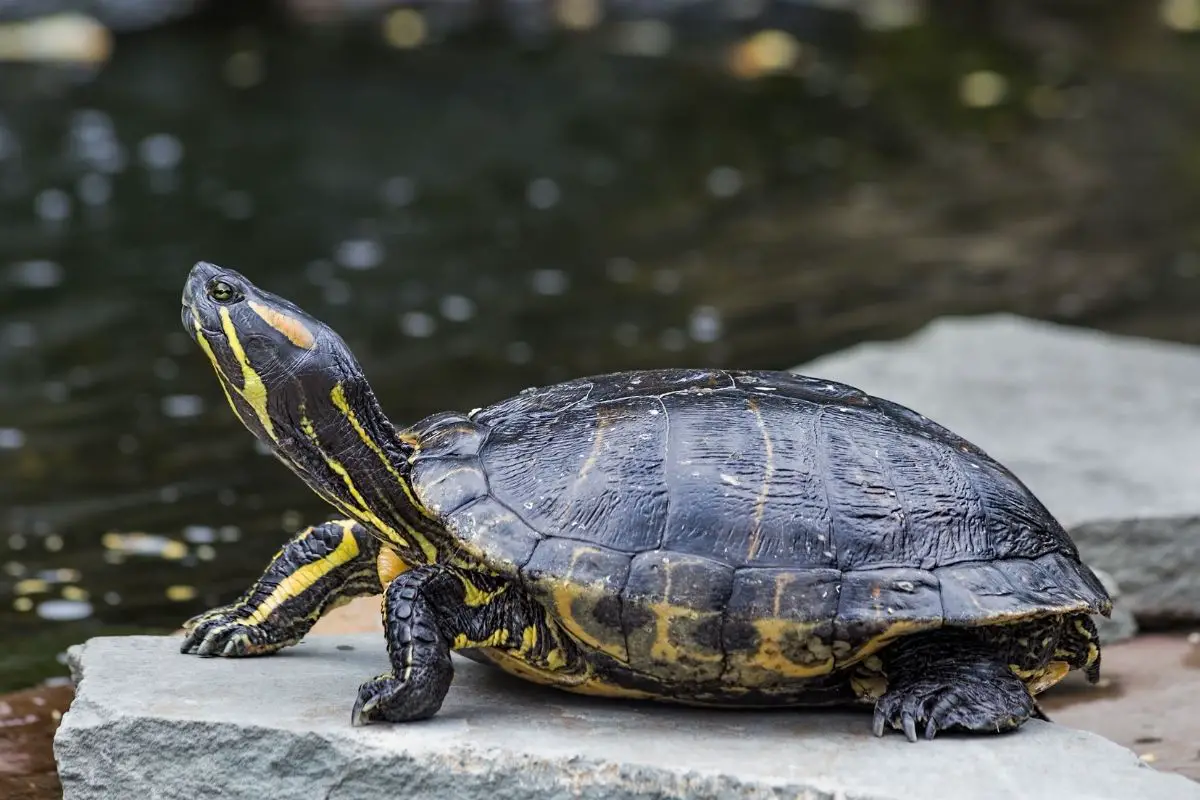
However, not every state in the US will have the same turtle species as the next, so each state has its own mix of turtle species to find.
There are 30 species of turtle in Texas, and today we are going to look into each one in regard to its many different characteristics.
So, if you’ve ever wondered how all of the different turtle species in Texas differ, you’ve come to the right place!
Native Turtles In Texas Cheat Sheet
If you don’t want to scroll through 30 different species of turtles, here is a cheat sheet on the turtles all native to Texas.
These are in the same order as the more in-depth information below too, so if you want to read more about one of the species, simply scroll to the correct number.
- Guadalupe Spiny Softshell – Apalone spinifera guadalupensis
- Desert Box Turtle – Terrapene ornata luteola
- Missouri River Cooter – Pseudemys concinna metteri
- Western Painted Turtle – Chrysemys picta bellii
- Common Snapping Turtle – Chelydra serpentina serpentina
- Ornate Box Turtle – Terrapene ornata ornata
- Big Bend Slider – Trachemys gaigeae
- Sabine Map Turtle – Graptemys ouachitensis sabinensis
- Cagle’s Map Turtle – Graptemys caglei
- Texas Tortoise – Gopherus berlandieri
- Southern Painted Turtle – Chrysemys picta dorsalis
- Mississippi Map Turtle – Graptemys pseudogeographica kohnii
- Texas Map Turtle – Graptemys versa
- Big Bend Mud Turtle – Kinosternon hirtipes murrayi
- Texas River Cooter – Pseudemys texana
- Ouachita Map Turtle – Graptemys ouachitensis ouachitensis
- Texas Spiny Softshell – Apalone spinifera emoryi
- Mississippi Mud Turtle – Kinosternon subrubrum hippocrepis
- Rio Grande River Cooter – Pseudemys gorzugi
- Pallid Spiny Softshell – Apalone spinifera pallida
- Eastern Box Turtle – Terrapene carolina triunguis
- Razorback Musk Turtle – Sternotherus carinatus
- Western Chicken Turtle – Deirochelys reticularia miaria
- Midland Smooth Softshell – Apalone mutica mutica
- Alligator Snapping Turtle – Macroclemys temminckii
- Western Spiny Softshell – Apalone spinifera hartwegi
- Red-eared Slider – Trachemys scripta elegans
- Common Musk Turtle (Stinkpot) – Sternotherus odoratus
- Yellow Mud Turtle – Kinosternon flavescens flavescens
- Texas Diamondback Terrapin – Malaclemys terrapin littoralis
Conservation Status – What Does It Mean?
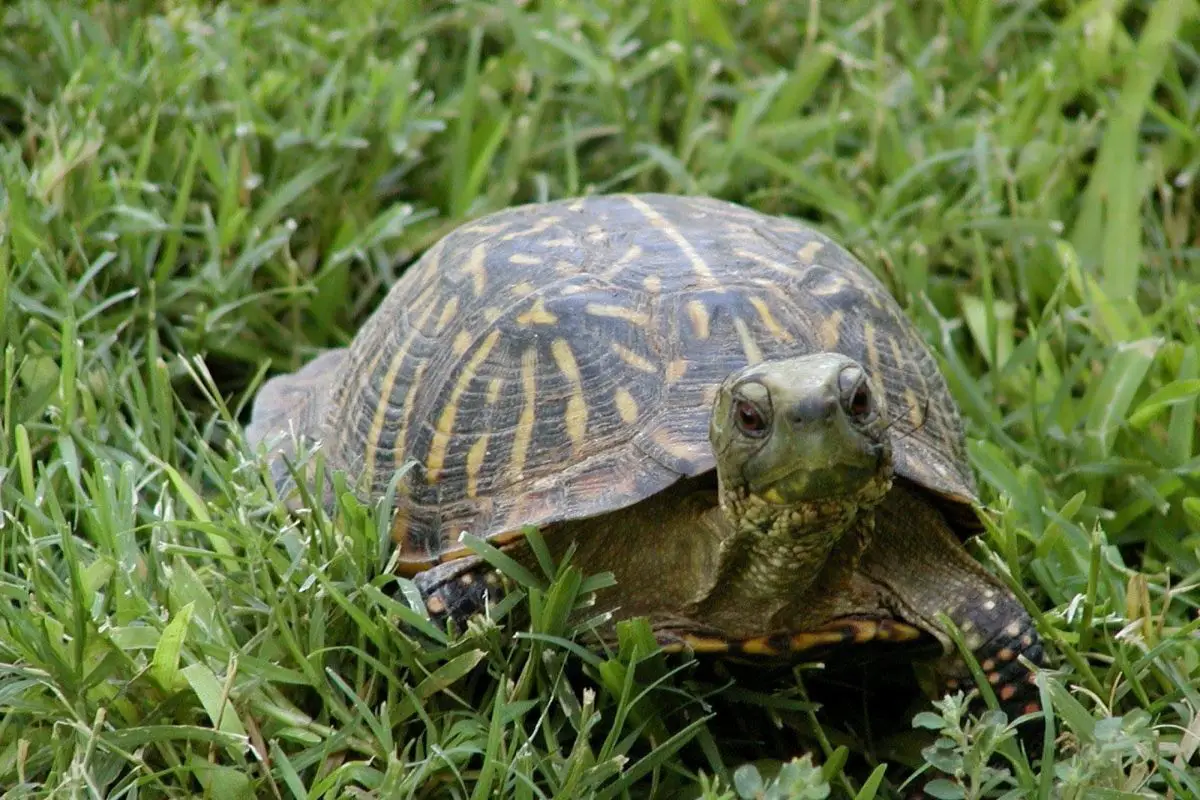
Turtles are among the most endangered animals in the world.
The conversation status is used to show people how close a species is to going extinct forever so that they are more mindful and aware of the imminent risk.
There are a number of factors that go into giving a species its conservation status – whether that’s a turtle, a tiger, shark, snake, bird, or anything else.
It doesn’t just factor in how many of the species are still alive on earth.
Deforestation is one of the main causes of turtles becoming extinct. Don’t let the fact that there are 30 different species of turtles in Texas fool you – some of these are very much in danger of becoming extinct.
An example of this is litter and pollutants being released into the water is negatively impacting the number of sea turtles living.
Below we have listed the conservation status of each turtle species living in Texas.
We have used the IUCN Red List of Threatened Species, which is one of the known conservation status trackers.
This tracker uses lots of factors to determine each species’ conservation status, such as how quickly their numbers are declining, distribution fragmentation, and the degree of its population.
The IUCN Red List of Threatened Species includes seven statuses, one of which is attached to every species of turtle in Texas. Here is what the statuses are and what they mean:
EX: Extinct
Extinction means that there are no living organisms under this species known.
EW: Extinct In The Wild
There are only living organisms under this species living in captivity. They could also be living in a naturalized population, but there are no known living organisms in their natural habitat.
CR: Critically Endangered
The risk of these species going extinct is incredibly high and we need to act immediately to avoid them going extinct once and for all.
EN: Endangered
There is a high risk that the species in question will go extinct in the wild.
VU: Vulnerable
This species is at high risk of endangerment in the wild, although not extinction yet.
NT: Near Threatened
There is a good chance that these species will become endangered in the not too distant future.
LC: Least Concern
Doesn’t qualify as a high risk category yet, low risk of endangerment and extinction.
30 Native Turtles In Texas
Without further ado, let’s get into our list of the 30 species of turtle native to Texas.
Bear in mind that a lot of subspecies of turtles are very similar aside from their coloring, so the rest of the information about them might be very similar.
There is no order to our list of turtles. Now, let’s get started with the first one!
Guadalupe Spiny Softshell Apalone Spinifera Guadalupensis
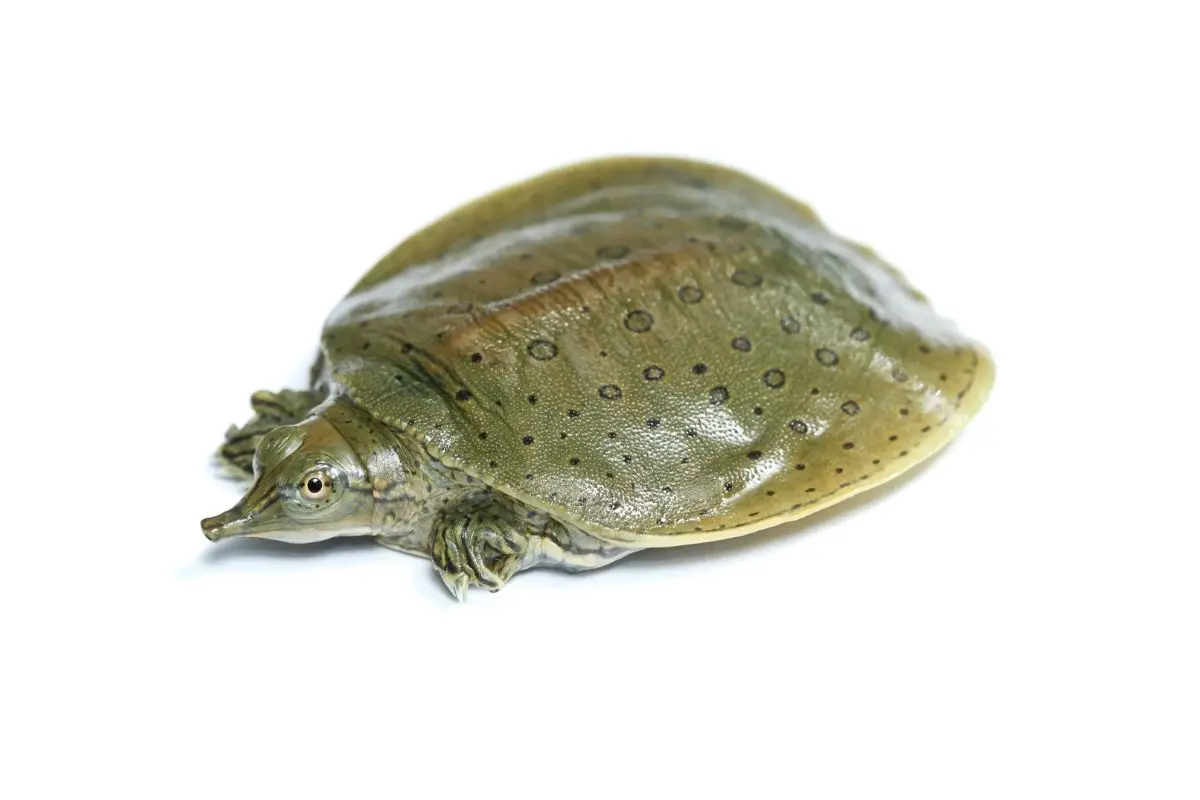
Conservation Status: LC
About The Turtle
Guadalupe Spiny Softshells have a shell that resembles leather with a rounded shape. As turtles go, they don’t look like the traditional turtle you would think of.
Their shells can range from light brown to dark olive, and some are even dark brown.
The shell is also covered in small white dots while the skin will be lighter than the shell and covered in small black spots.
Their noses are also very long and pointy, which is perhaps the most distinguishable feature of the turtle. Pair this with the white spots and you can’t mistake the Guadalupe Soft Shell for any other turtle!
Maximum Size
Male Guadalupe Soft Shells will be much smaller than females, with males ranging between only 5 and 10 inches. Females, on the other hand, will range from between 9 and 20 inches, so that’s a big size difference.
Favorite Snacks
These turtles love eating snails, slugs, insects, worms, and anything else they find along the way.
They are carnivores, so meat is their main source of nutrition. However, they’ll eat almost anything, including plants, grasses, and even roots if they’re desperate.
Usually Found
They prefer sandy areas where there is plenty of water nearby, but they can survive just fine in muddy or rocky areas. You can usually find Guadalupe Soft Shells in marshes, rivers, lakes, and other wetlands.
Lifespan
The lifespan of a Guadalupe Soft Shell will be between 40 and 60 years on average.
Mating Season
They breed during warmer months, usually early spring through to late summer. During the breeding season, the incubation period is around 80 days.
Desert Box Turtle Terrapene Ornata Luteola
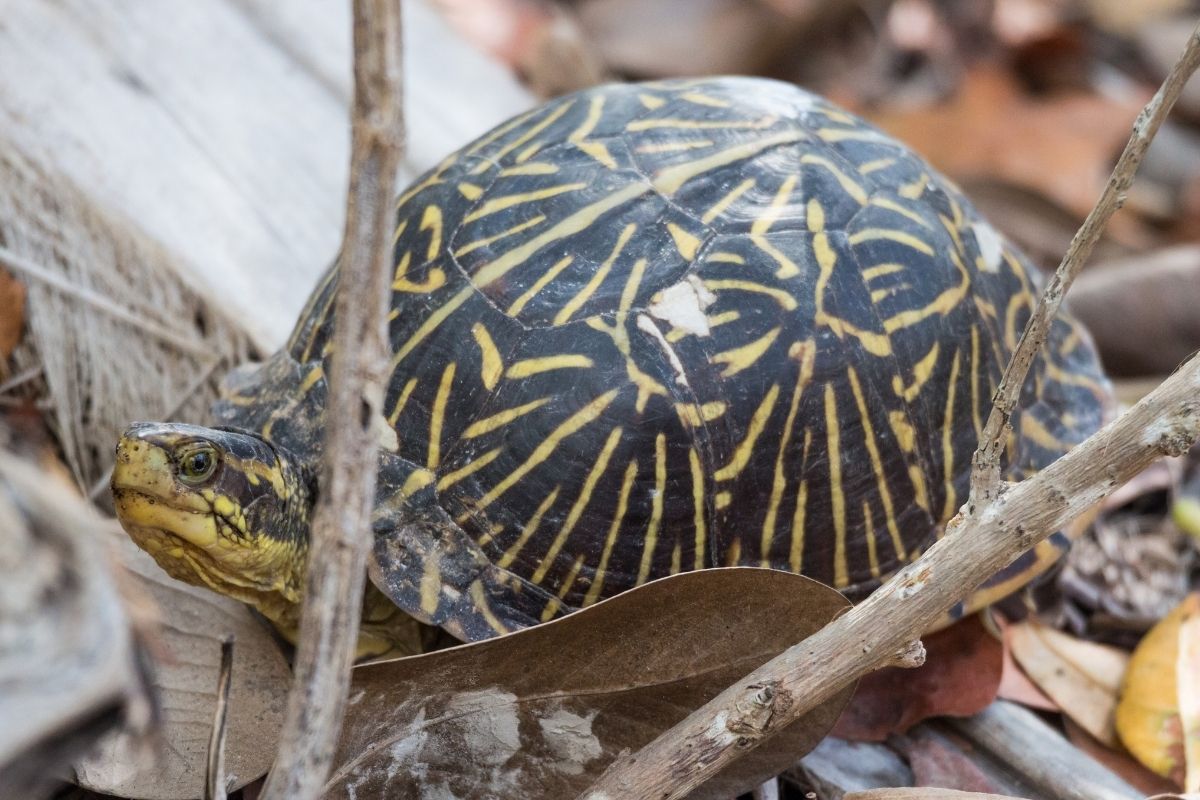
Conservation Status: VU
About The Turtle
The Desert Box Turtle has a domed shell that will either be dark brown or black.
It will often be littered with bright orange and yellow patterns, such as stripes and spots. The lower shell will be yellow with brown or black lines, so like a reverse of the upper shell.
Their skin will often be brown or black but covered in compacted yellow spots to brighten it all over.
Maximum Size
The average size for a Desert Box Turtle is between 5 and 7 inches.
Favorite Snacks
Another omnivorous turtle, the Desert Box Turtle eats both plants and meat. Due to them being more land bodies, it might be easier for them to find food in the form of plants.
Usually Found
These turtles live on land more than in water like most other turtles. You can often spot them walking along woodlands as well as meadows and grasslands.
Lifespan
The average lifespan of Desert Box Turtles is between 50 and 100 years, so very impressive for a turtle!
Mating Season
Between May and July is when this turtle will nest, and the incubation period will take around 70 to 80 days.
Missouri River Cooter Pseudemys Concinna Metteri
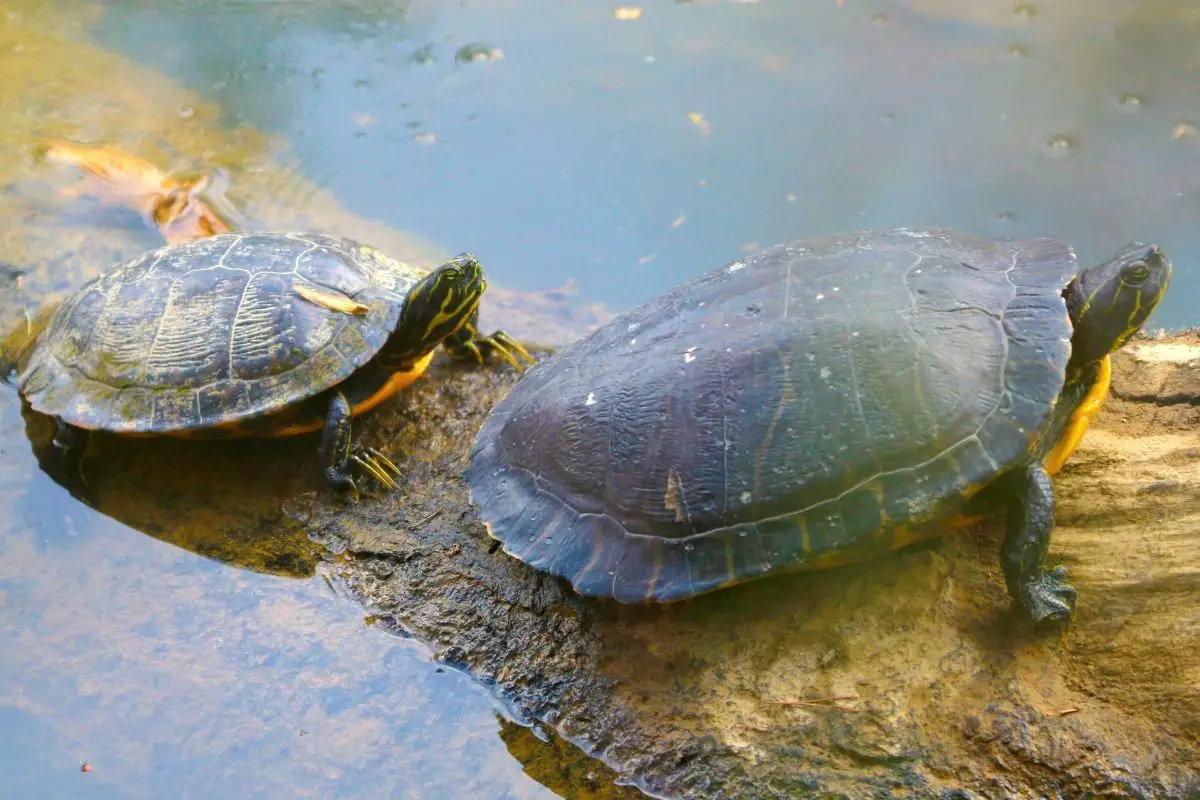
Conservation Status: LC
About The Turtle
This little guy has a flat shell and a large head with a short neck. The upper shell will be olive or brown with lots of yellow lines running down it.
The lower part of the shell will either be yellow with no markings or yellow with some faint gray markings. Their skin will be brown or black with lots of yellow lines, very similar to its upper shell.
Maximum Size
Males will reach up to 12 inches long but females might grow longer than that, some even growing to be 15 inches long.
Favorite Snacks
These turtles are omnivores, meaning they eat both plants and animals.
They also have an amazing sense of smell, which helps them sniff out prey. Missouri River Cooters prefer vegetation to meat, although they will eat meat if needs be.
Usually Found
You can find these guys in prairies, swamps, and forests. They prefer to be in moving water with streams, but they can also be in lakes and ponds as well.
Lifespan
The average lifespan of a Cooter is between 20 and 40 years.
Mating Season
They will begin nesting in May and continue until July. The average incubation period lasts between 80 and 100 days.
Western Painted Turtle Chrysemys Picta Bellii
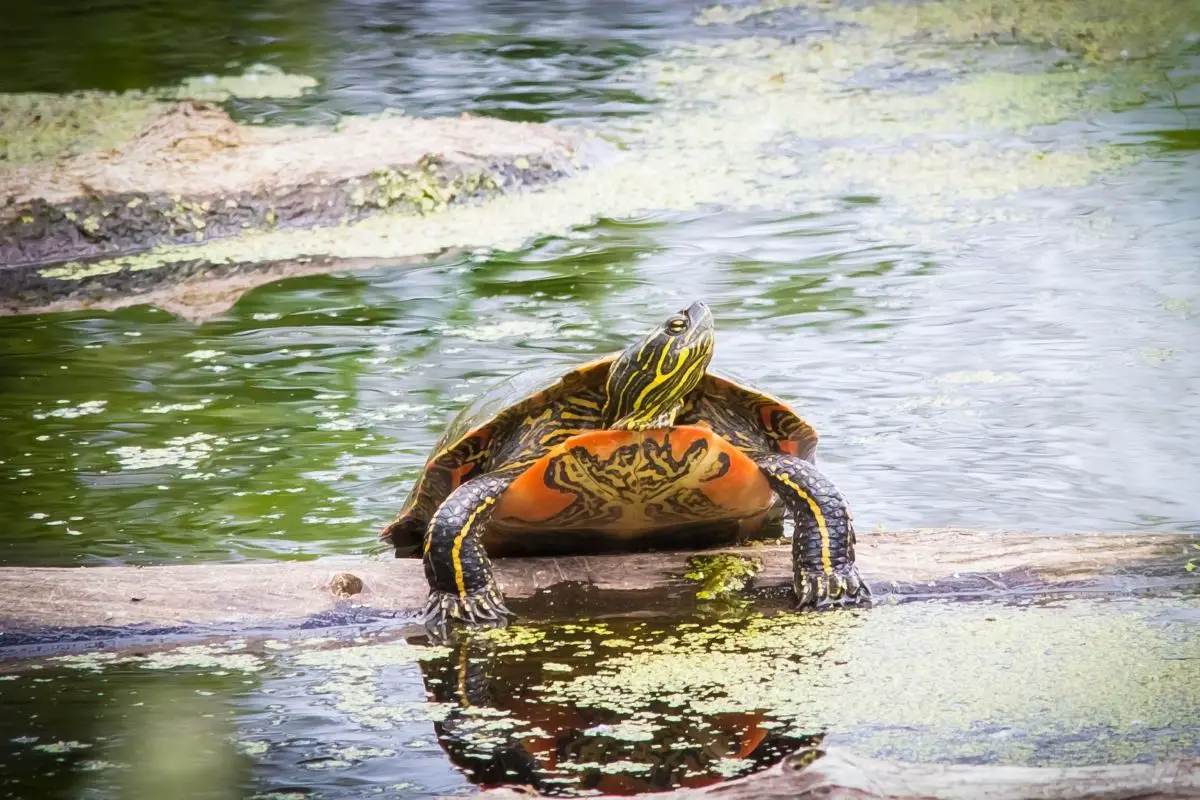
Conservation Status: LC
About The Turtle
This turtle often has a dark olive green to a black shell, and it also includes lots of markings that make it very easy to identify the Western Painted Turtle from the rest.
The edges of the shell will be yellow, orange, or red.
The lower shell will also be red with darker spots in the center of their bodies, with the brighter red being towards the edge of the lower shell. Their skin will also be covered in distinct yellow lines.
Maximum Size
The maximum size of the Western Painted Turtle is between 5 and 7 inches.
Favorite Snacks
These turtles are omnivores, so they’ll enjoy a diet of both meat and plant matter.
Usually Found
You can find this turtle in freshwater sources such as ponds, lakes, and rivers.
Lifespan
A Western Painted Turtle can live between 20 and 30 years.
Mating Season
Nesting begins in March and ends around June to July. The incubation period is 80 days.
Common Snapping Turtle Chelydra Serpentina Serpentina
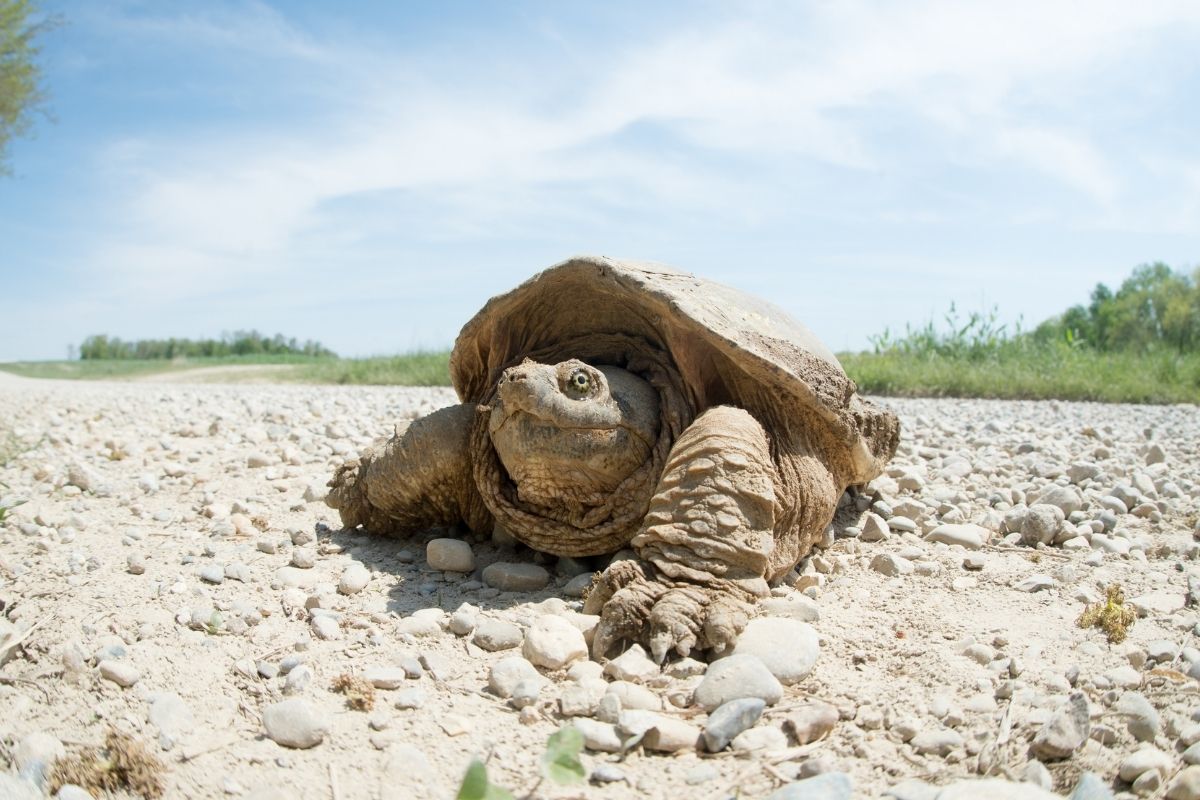
Conservation Status: LC
About The Turtle
Common Snapping Turtles will either have black or brown skin and shells.
Their necks are often longer than other turtle species, as well as their legs and tails. Like all snapping turtles, they will have a pointed beak.
Maximum Size
The average is between 12 and 15 inches, although there have been some occasions where the Common Snapping Turtle has reached up to 19 inches.
Favorite Snacks
As an omnivorous turtle, the Common Snapper eats plants and meat sources. They’ll either actively hunt within the water for their prey or they will scavenge for food along the bottom.
Usually Found
These guys live in rivers, streams, lakes, and ponds. They prefer warm temperatures and often spend time near the shoreline. They will enjoy any body of water with a muddy or sandy bottom.
Lifespan
They can live between 30 and 50 years.
Mating Season
Nesting will start between May and July and the incubation should last between 70 and 100 days.
Ornate Box Turtle Terrapene Ornata Ornata
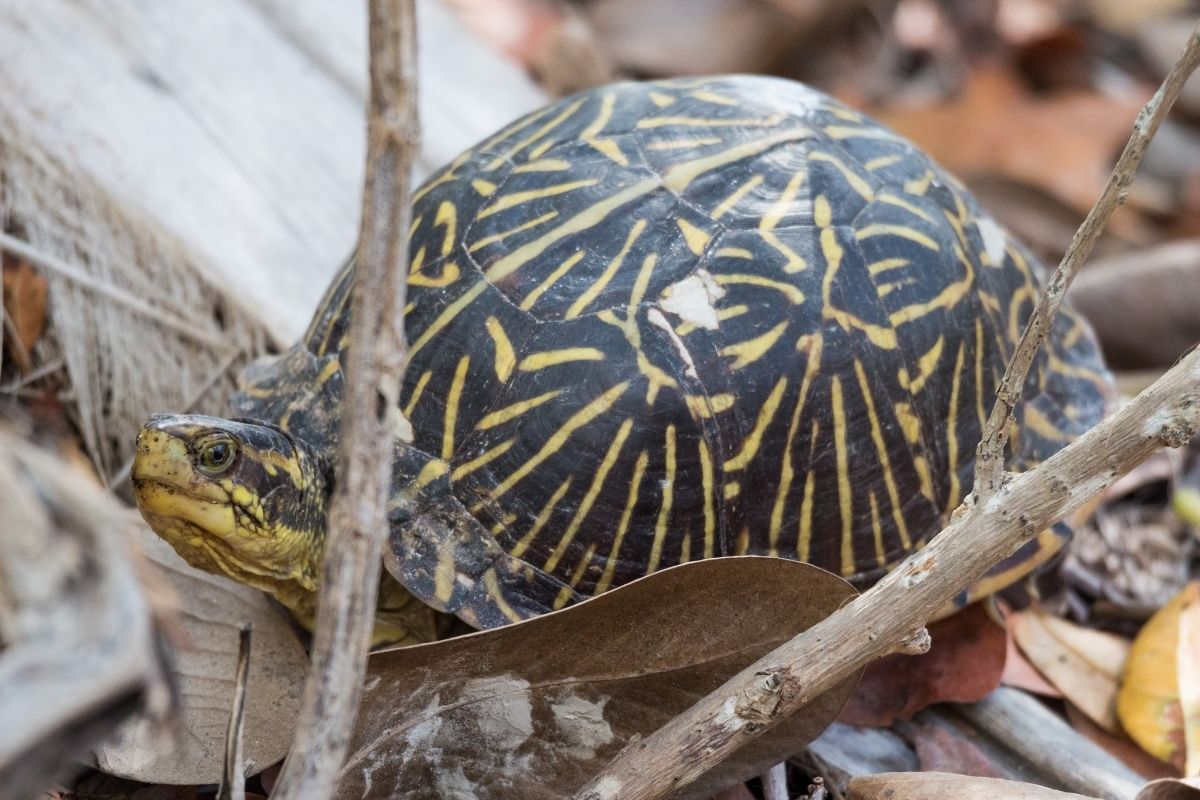
Conservation Status: VU
About The Turtle
Ornate Box Turtles are one of the most common box turtles found in North America.
They are native to the United States from Alaska to Florida and Mexico. They have a domed shell which can be either black or brown.
The shell will often have a lot of patterns on it, such as stripes and spots, ranging from yellow to orange in color. Their skin will also be covered in yellow dots.
Maximum Size
These turtles are on the smaller side, ranging from 5 to 7 inches in length.
Favorite Snacks
Like all box turtles, they are omnivores, eating both plants and meat. They like to eat insects, worms, snails, slugs, frogs, fish, crustaceans, and small mammals.
Usually Found
This particular subspecies likes to inhabit wetlands, such as marshes and bogs. They also like to live on land, however, and will often be spotted on woodlands, grasslands, and meadows. Unlike most turtles, the Ornate Box turtle enjoys land more than water.
Lifespan
Anything ranging from 50 to 100 years is average for this turtles’ lifespan.
Mating Season
Nesting is between May and July and incubation will take around 70 to 80 days.
Big Bend Slider Trachemys Gaigeae
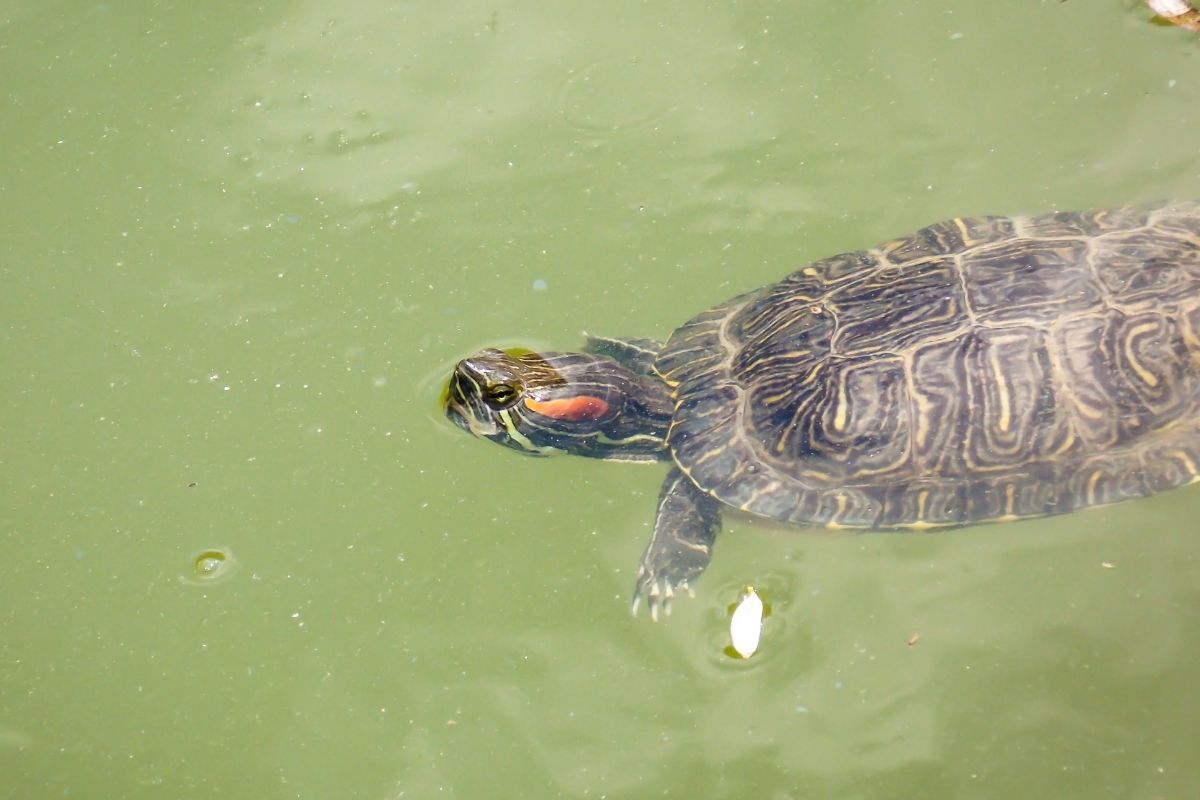
Conservation Status: VU
About The Turtle
This turtle’s shell will be a dark color such as brown or olive green.
The pattern over this will then be a warmer color, such as red, yellow, or orange. The lower shell is commonly yellow with black spots along with it.
The skin of the Big Bend Slider will be the same as the majority of the shell – either dark brown or green – with neon yellow stripes running along with it. On either side of the face, you will see two large red circles.
Maximum Size
It is not uncommon to see the Big Ben Slider reach a maximum size of 11 inches, although it can vary between that and only 5 inches.
Favorite Snacks
As a herbivore, the Big Ben Slider will only eat fruit, leaves, and vegetables that it finds along the way. As these turtles enjoy hanging out in the water, they will often eat water vegetation from the bottom.
Usually Found
As we’ve just mentioned, Big Ben Sliders enjoy hanging out in slow-moving bodies of water, such as lakes, creeks, pounds, and sometimes marshes.
Lifespan
This turtle has a shorter lifespan than most with it being between 20 and 30 years.
Mating Season
Nesting will occur during the springtime and won’t end until August to September. Incubation lasts for around 70 to 80 days.
Sabine Map Turtle Graptemys Ouachitensis Sabinensis
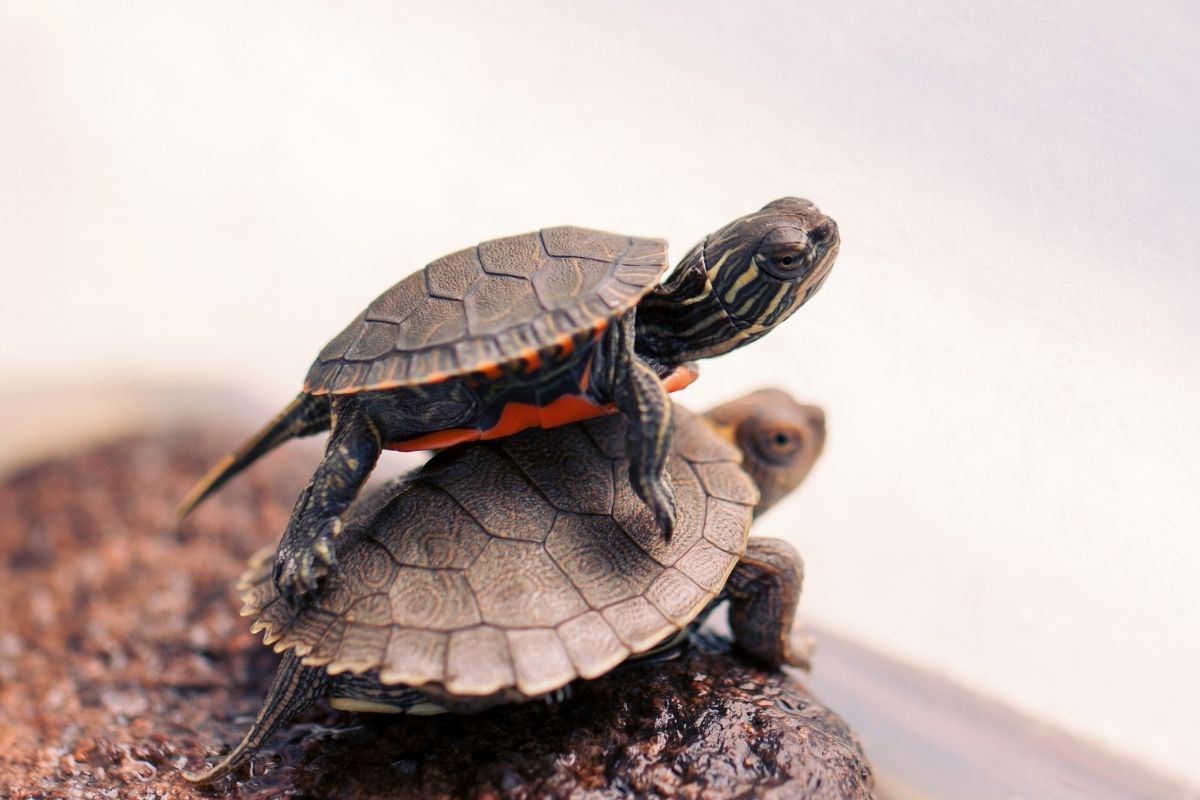
Conservation Status: LC
About The Turtle
The Sabine Map Turtle is native to the southern part of Texas. The most distinctive feature of this turtle is the vertebral keep on the top shell which looks like a line of black spikes.
The rest of the upper shell is multicolored, with some of the most common being olive, brown, gray, white, cream, and black.
The upper shell is also lined with points at the edges. The lower shell is lighter than the upper shell, and the skin will be either dark brown or black with light-colored stripes.
Maximum Size
Males will only reach a length of between 3 and 5 inches while females are much larger, with an average size of between 8 and 10 inches.
Favorite Snacks
The Sabine Map turtle loves to eat fruits and berries, especially those that grow near the ground.
It will also eat nuts, seeds, and roots. They are omnivores, however, so they will also eat a vast range of meat sources such as snails and insects.
Usually Found
It is an aquatic species that live in rivers, ponds, swamps, and other shallow waters. They like stagnant water more than moving waters, so look for ponds and lakes.
Lifespan
Their average lifespan is between 30 and 50 years.
Mating Season
Map turtles are able to nest many times a year during the warmer months.
Cagle’s Map Turtle Graptemys Caglei
Conservation Status: LC
About The Turtle
The Cagle’s Map Turtle’s upper shell will usually be brown or olive green, with a pattern that looks similar to that of a map.
There will also be a vertebral keel along with the upper shell that looks like a line of big spikes running along its spine.
The lower shell is often yellow and lighter than the upper shell. It also will have a darker pattern all over it. The Cagle’s Map Turtle’s skin will be dark brown or green, with lots of thin white stripes.
Maximum Size
The Cagle’s Map Turtle is an incredibly small turtle, with males only reaching maximum sizes of between 3 and 5 inches. Females are larger with an average size between 8 and 10 inches.
Favorite Snacks
Cagle’s Map Turtles are omnivores, so they’ll eat both vegetation and meat. They’re basically anything that they can find!
Usually Found
Map turtles will be found in stagnant bodies of water such as lakes, ponds, streams, and rivers.
Lifespan
The Cagle’s Map Turtle has a lifespan of between 30 and 50 years.
Mating Season
Map turtles can nest many times a year between early spring and late summer.
Texas Tortoise Gopherus berlandieri
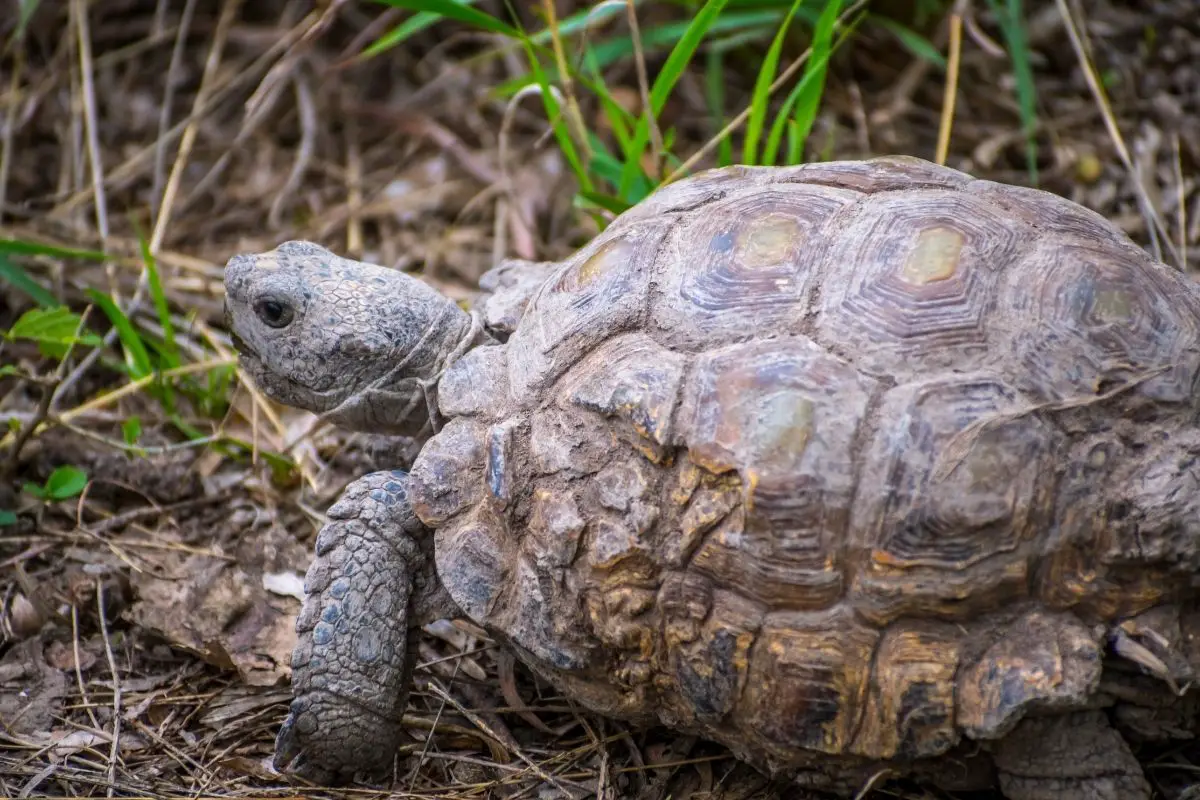
Conservation Status: LC
About The Turtle
The Texas Tortoise doesn’t have much in the way of its appearance to write home about. The most distinct feature is the curved edging of its shell.
The upper shell is brown with some yellow spots around it, and the skin is gray with small black spikes along with it.
Maximum Size
These turtles can grow to be between 8 and 12 inches.
Favorite Snacks
Gophers love to eat grass and leaves. They will also eat fruit, seeds, and plants. They are herbivores, meaning they will only eat plant food rather than any meat sources.
Usually Found
The Texas Tortoise will be found on brushlands and in the scrub of Texas, opting for places with sandy soils without much water around.
Lifespan
The Texas Tortoise can live between 40 and 50 years.
Mating Season
Nesting will begin in the spring and won’t end until the summer. Incubation will last around 85 to 115 days.
Southern Painted Turtle Chrysemys Picta Dorsalis
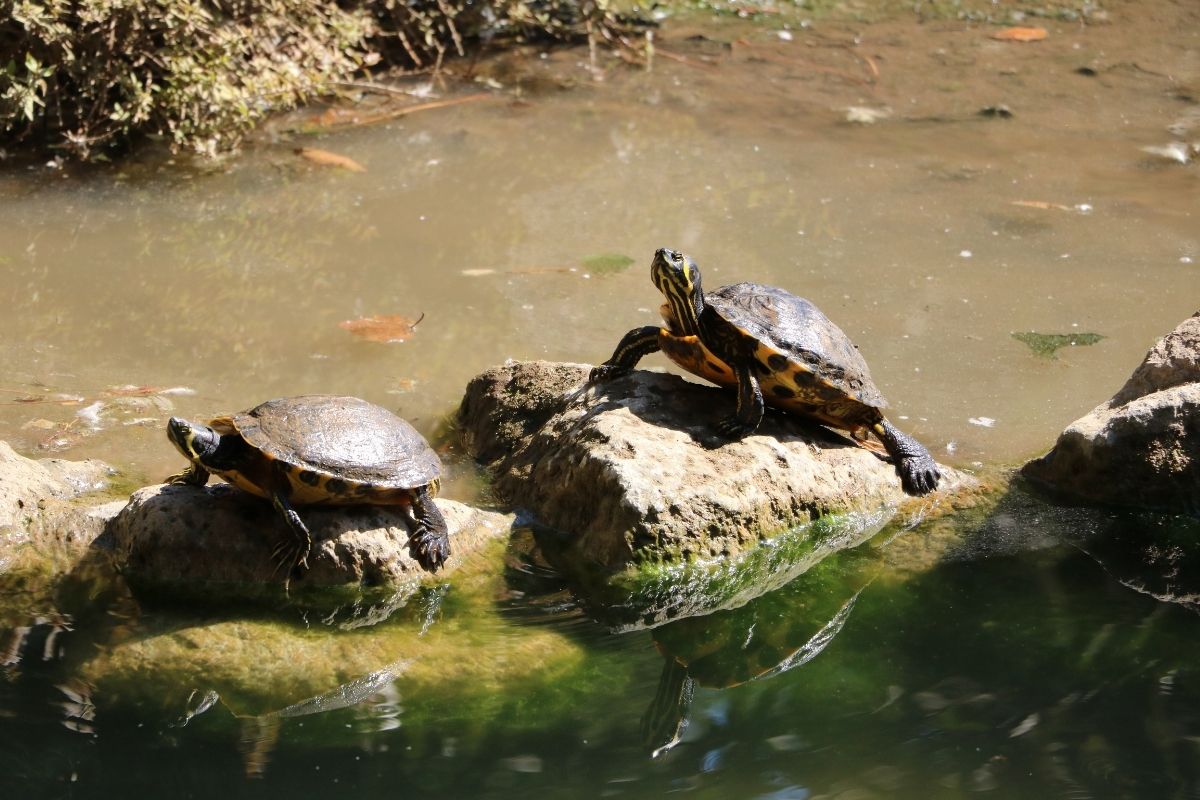
Conservation Status: LC
About The Turtle
Southern painted turtles have an olive or dark brown shell with a distinctive red stripe running down the entire middle of the shell.
This stripe can also be orange or yellow, but red is the most common color – hence the name.
The lower shell will be a plain yellow color, although it might have a few colored spots along with it. Their skin will usually be either dark brown or black with red, yellow, or orange stripes.
Maximum Size
Painted turtles rarely exceed a length of between 5 and 7 inches.
Favorite Snacks
They love eating fruits and vegetables, especially those that grow close to the ground.
They will also eat nuts, leaves, and roots. They’re omnivores, though, so they will also consume a wide variety of meats including snails, insects, and even fish.
Usually Found
Painted turtles prefer to live in slow-moving rivers, lakes, and marshes, so you should look for these types of habitats when searching for them. They also much prefer fresh water over salt water.
Lifespan
The average lifespan for a Southern Painted Turtle is between 20 and 30 years.
Mating Season
These turtles will begin nesting in March and will stop in June. The incubation period is an average of 80 days, although it could be slightly more or less than this.
Mississippi Map Turtle Graptemys Pseudogeographica Kohnii
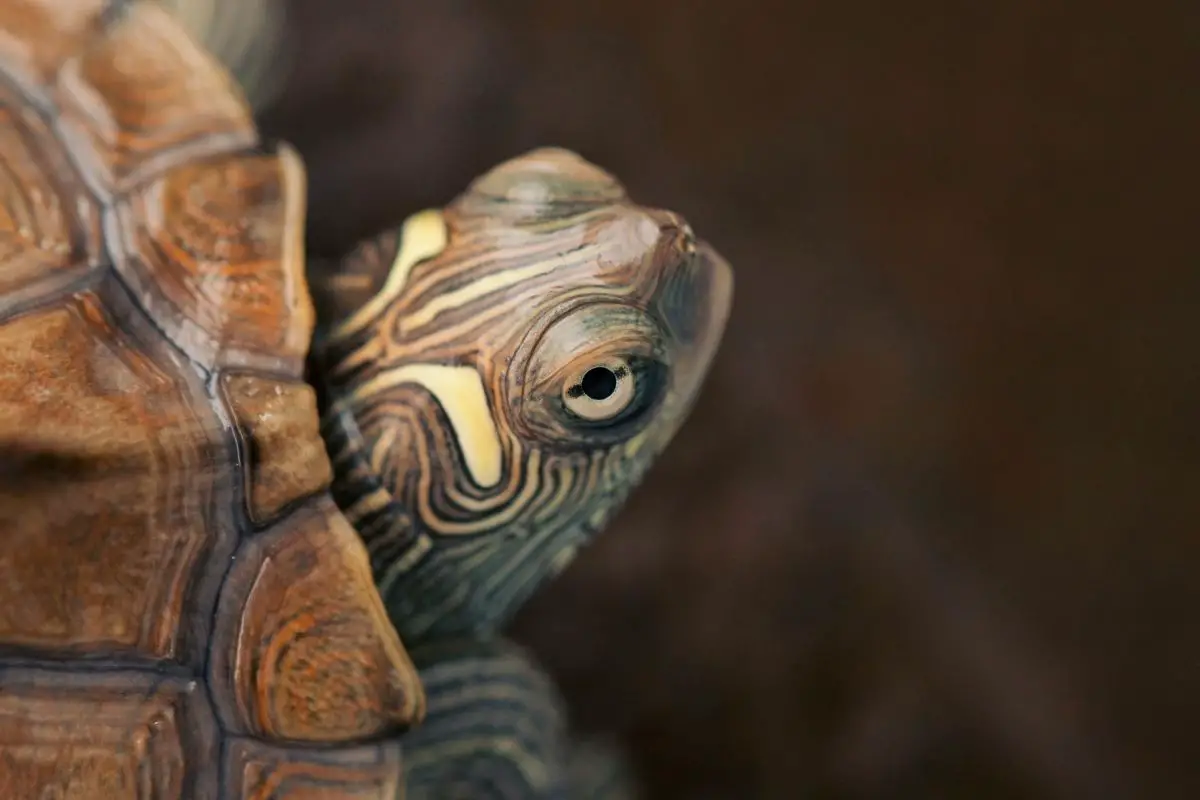
Conservation Status: LC
About The Turtle
The Mississippi Map Turtle will often be olive, black, or brown colored. The upper shell has a pattern that resembles that of a map, which is where the map turtle gets its name from.
There is more than one map turtle on this list, and they all have a distinct map pattern on their shells.
When looking at the upper shell you will also be able to see a vertebral keel, which is quite difficult to see. As the turtle gets older, both the map pattern and the keel will get less prominent and more difficult to see.
The lower part of the shell will be yellow and its skin will be covered in thin yellow lines. Its neck and limbs are also much longer than a traditional turtle’s are.
Maximum Size
The maximum size will be between 3 and 5 inches for males, and 8 and 10 inches for females.
Favorite Snacks
As an omnivore, this turtle will eat both meat and plants for its nutrients.
Usually Found
You can often find these turtles in slow-moving waters such as lakes, ponds, and rivers.
Lifespan
The lifespan will be around 30 to 50 years for a Mississippi Map Turtle.
Mating Season
These turtles can nest multiple times a year between spring and summer.
Texas Map Turtle Graptemys Versa
Conservation Status: LC
About The Turtle
This turtle has an olive green or brown shell with yellow lines resembling a map’s swirling lines.
There is also a vertebral keel along the spine of the shell. Both this and the map lines will fade as the turtle gets older, so this is a good way of determining how old the turtle is.
The lower shell will be yellow with some black lines running around it. Their skin will be green or brown with yellow stripes.
Maximum Size
Male Texas Map Turtles can grow to between 3 and 5 inches long while females can grow to between 8 and 10 inches long.
Favorite Snacks
Like many other turtles, this species will eat both meat and plant matter for food. This is due to the fact that they are omnivores.
Usually Found
Map turtles like to live near large bodies of water, so you should search for these areas when looking for these turtles. You can usually find them in slow-moving waters such as lakes and ponds.
Lifespan
The average lifespan for a Texas Map Turtle is between 30 and 50 years.
Mating Season
Map turtles can nest multiple times a year during both spring and summer.
Big Bend Mud Turtle Kinosternon Hirtipes Murrayi
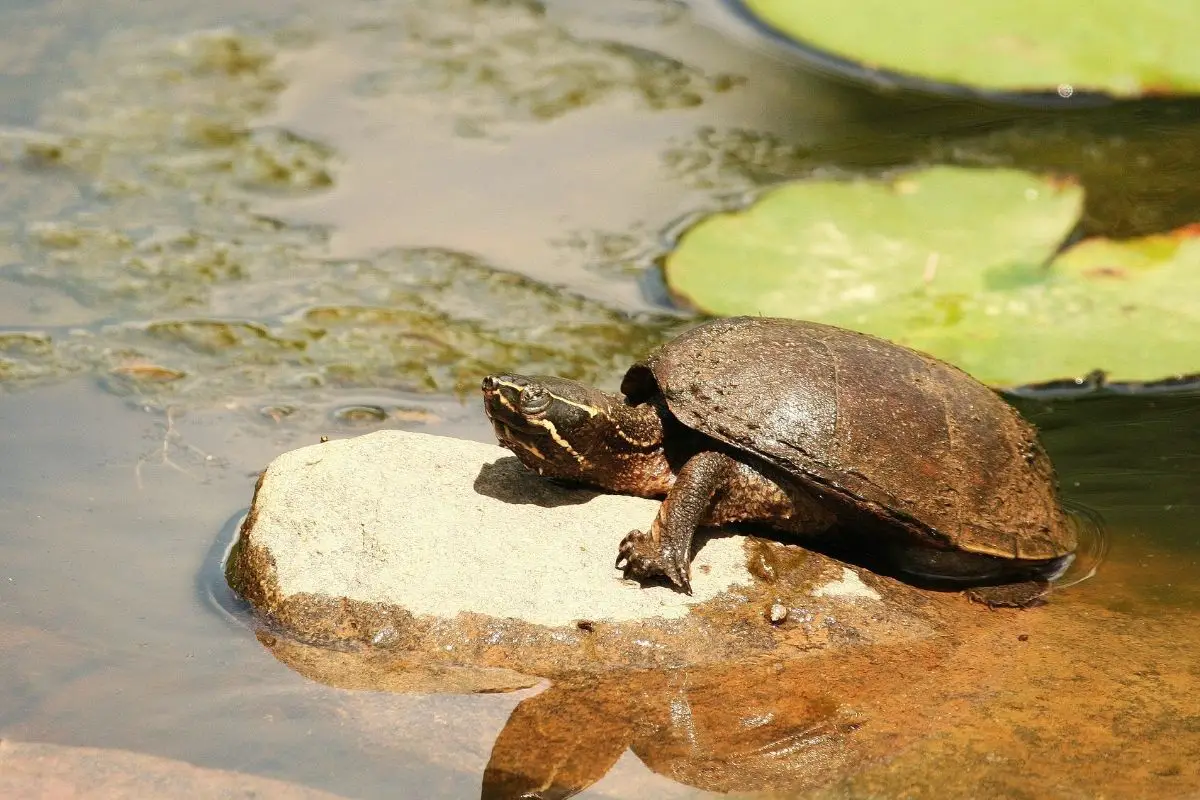
Conservation Status: LC
About The Turtle
This turtle is a similar subspecies to the Big Bend Slider. It has a very domed shell that will be a dark brown or olive color. The lower shell will be a mixture of yellow and brown.
The Big Bend Mud Turtle’s skin is the same color as the shell on the top of its head, while the lower skin will be a more yellow color.
Maximum Size
Despite its name, this is a very small turtle of a maximum size being between 5 and 7 inches.
Favorite Snacks
Mud turtles tend to be omnivores, and the Big Bend is no different. They’ll eat a mixture of fruits, vegetation, snails, insects, and fish.
Usually Found
Mud turtles will often be found wherever there is mud, so look for bodies of water with soft bottoms.
These could include swamps, marshes, and maybe even some lakes and rivers.
Lifespan
The average lifespan of a Big Bend Mud Turtle is between 30 and 50 years.
Mating Season
Nesting will begin in May and won’t end until the end of July. Their incubation period is considerably longer than most turtles, it being between 100 and 110 days long.
Texas River Cooter Pseudemys Texana
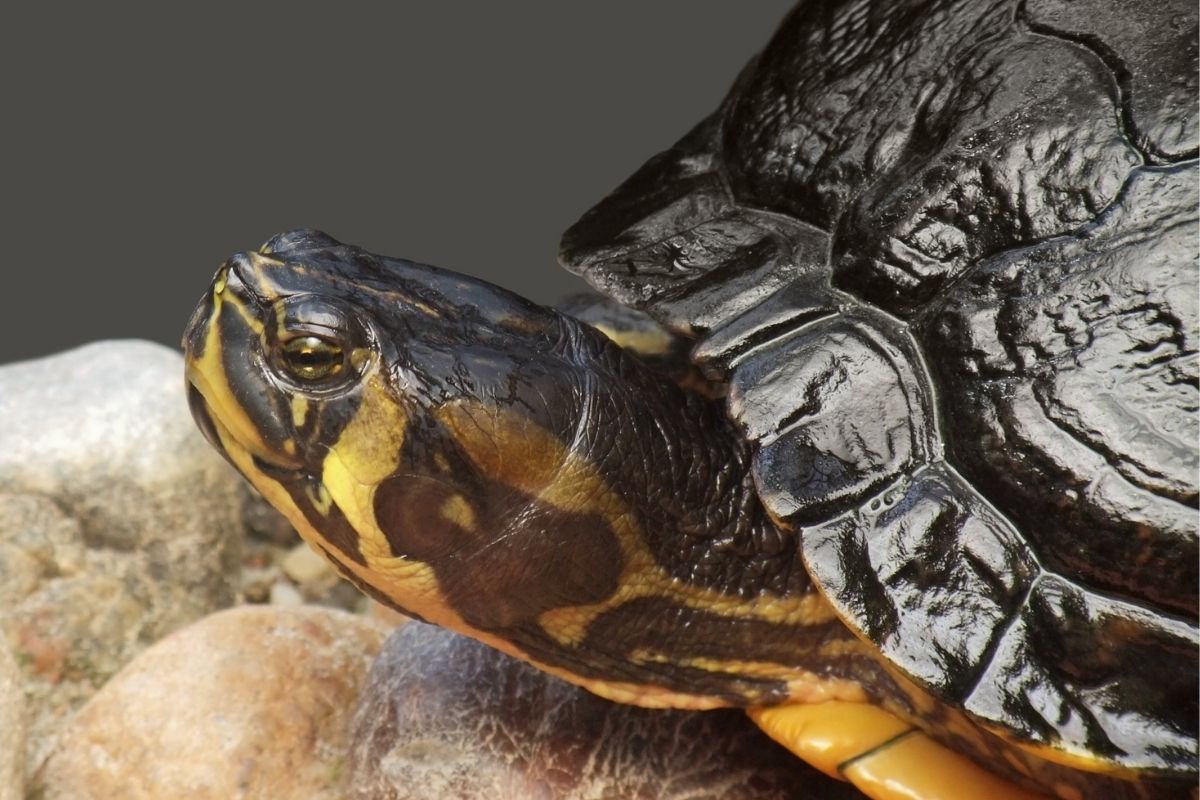
Conservation Status: LC
About The Turtle
The Texas River Cooter often comes equipped with a black or dark brown shell.
There is no pattern on the upper shell, while the lower shell might be patterned with yellow lines. Their skin is the same color as their upper shell with yellow stripes running across it.
Maximum Size
Most Texas River Cooters will have a maximum size of 8 to 12 inches, although some females can reach 15 inches long.
Favorite Snacks
These turtles will eat a variety of foods including plants, insects, and small animals. They are omnivores with a preference for plants, although they will eat meat on occasion.
Usually Found
Texas River Cooters prefer to live near rivers and streams, so if you’re looking for one, try searching for these types of habitats.
They can also be found in ponds or lakes, although this is less common as they like moving waters the best.
Lifespan
They will usually live between 20 and 40 years.
Mating Season
Nesting season is between May and July and their incubation period is between 80 and 100 days.
Ouachita Map Turtle Graptemys Ouachitensis Ouachitensis
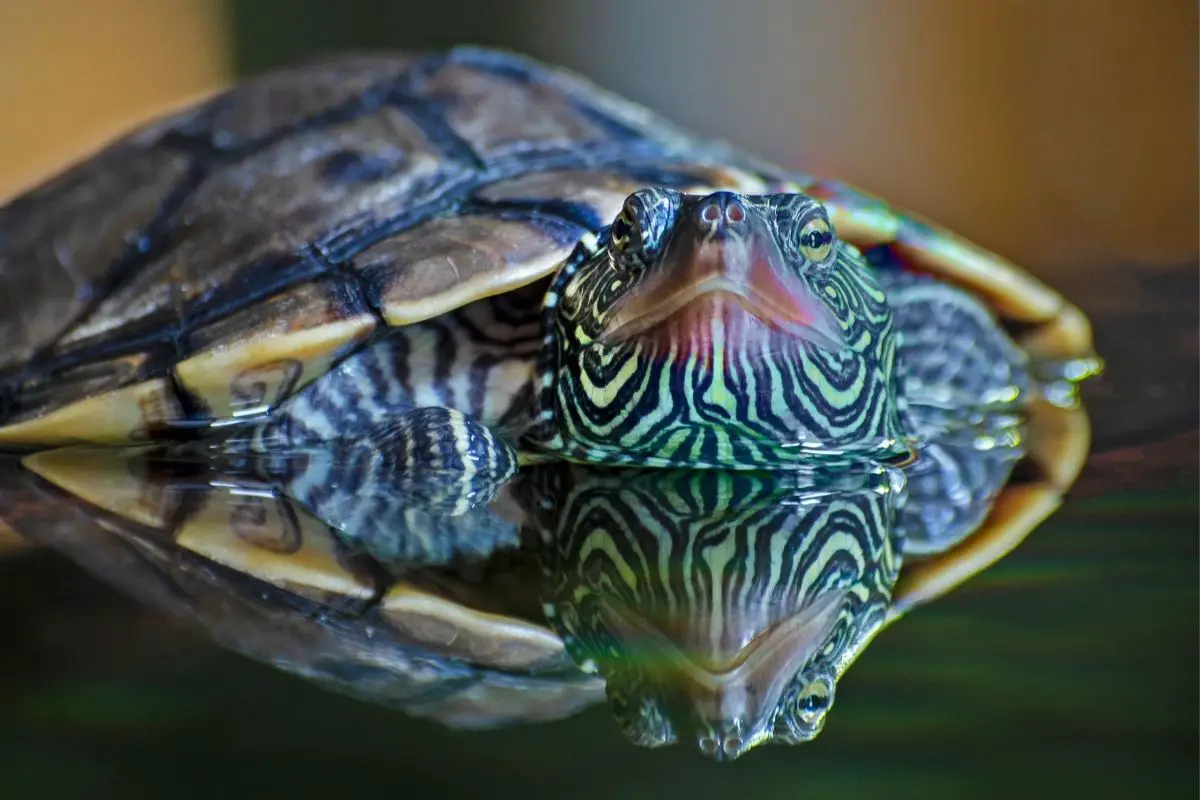
Conservation Status: LC
About The Turtle
Ouachita Map Turtles are traditionally olive, brown, or black in color.
Again, like all map turtles, the pattern on the shell resembles a map.
There is also a vertebral keel, which gets less prominent the older the turtle gets. This can also be said for the map pattern on the upper shell.
The lower shell is yellow and the skin of this turtle is the same as the upper shell with yellow stripes.
Maximum Size
Males will reach a maximum of 5 inches long while a female can grow up to 10 inches long.
Favorite Snacks
Like other turtles, this one likes to eat a variety of foods including plant matter, worms, insects, and fish, but they’re not picky about what they eat. This is due to the fact that they are omnivores.
Usually Found
Ouachita map turtles prefer to live near streams, creeks, and rivers.
They need clean water to stay healthy. Look for areas where there is plenty of vegetation and lots of aquatic plants. They like water that is either still or very slow-moving.
Lifespan
The average lifespan of this turtle is between 30 and 50 years.
Mating Season
Map turtles have the ability to nest many times a year from the beginning of spring to late summer.
Texas Spiny Softshell Apalone Spinifera Emoryi
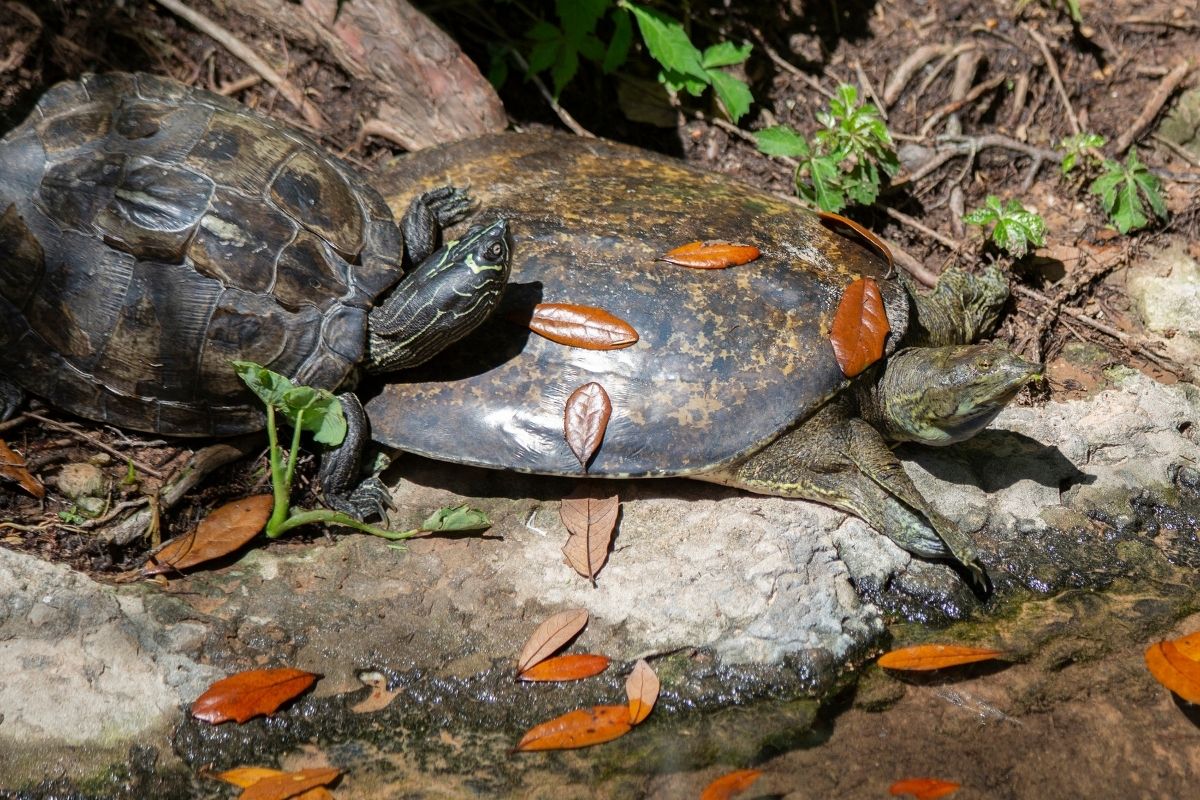
Conservation Status: LC
About The Turtle
Like most softshells, this turtle has a very flat shell and it will either be dark or olive green.
The shell will also be dotted with white spots. The shell is bumpy near the front edges and towards the center of the upper shell.
The bottom edge of the shell has three lines that surround the bottom of the shell, all the way towards the turtle’s head.
Maximum Size
Males will be between 5 and 10 inches long while females can grow up to 20 inches long.
Favorite Snacks
This turtle eats a wide range of food items including plants, insects, snails, frogs, and even small mammals.
It is an opportunistic feeder. However, as they are carnivores, they will mainly eat meat sources over vegetation, unless there is no other option.
Usually Found
Spiny softshells are typically found in freshwater bodies such as ponds, lakes, and marshes.
They tend to avoid brackish water because saltwater makes them sick. They are often seen swimming around in groups.
Lifespan
On average, a Texas Spiny Softshell will live between 40 and 60 years.
Mating Season
Nesting begins in the springtime and doesn’t end until the late summer. Eggs will hatch after around 80 days.
Mississippi Mud Turtle Kinosternon Subrubrum Hippocrepis
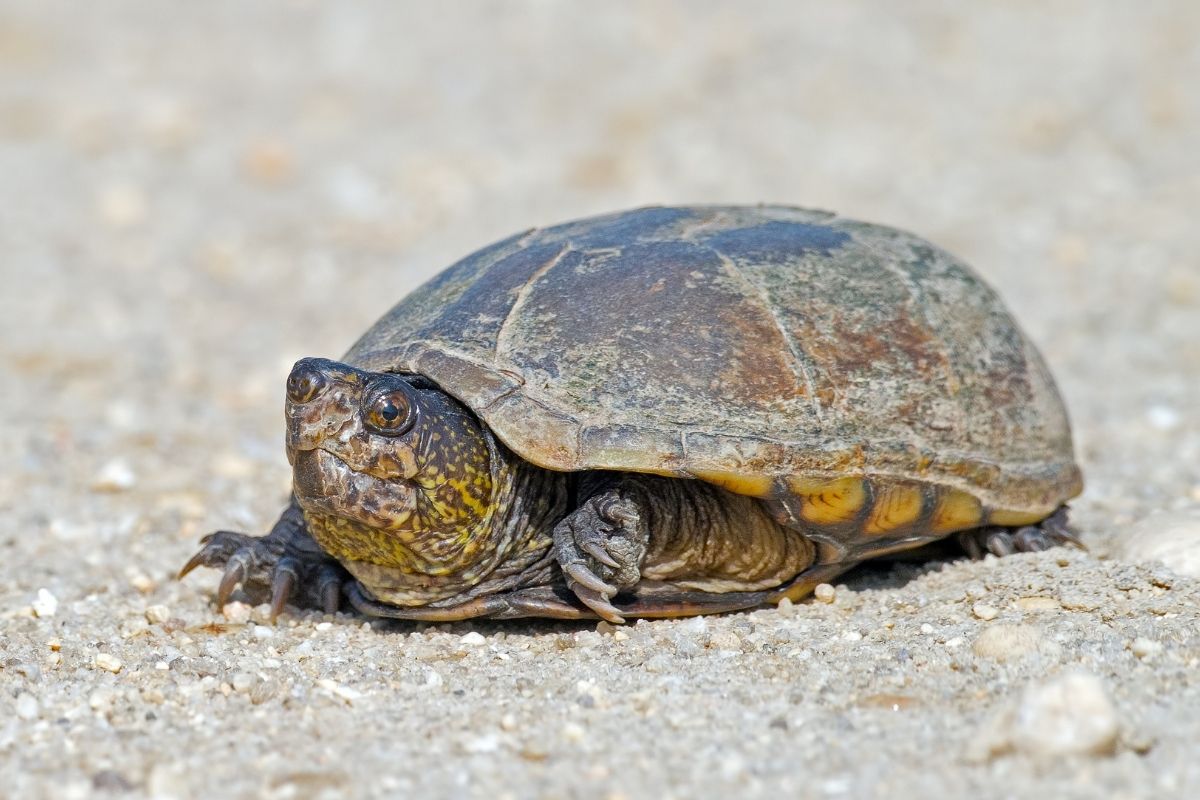
Conservation Status: LC
About The Turtle
The upper shell of this turtle is either dark brown or black, and the lower part will be a yellow color with lots of brown mottling.
The skin often matches the upper shell’s color with two thick yellow stripes running along with the head and neck.
Maximum Size
The average size of a Mississippi Mud Turtle is between 5 and 7 inches.
Favorite Snacks
These turtles are omnivores, so they’ll eat all kinds of fruit, vegetables, and meat sources.
Usually Found
Mississippi Mud Turtles live in shallow waters, usually near coastal areas. They can survive in freshwater, saltwater, and brackish water.
They prefer waters with a soft bottom such as mud, as the name suggests, and sand. Think swamps, marshes, and lakes.
Lifespan
The lifespan is an average of 30 to 50 years.
Mating Season
Starting in May, nesting will end around July and the incubation will last between 100 and 110 days, which is longer than most turtle species.
Rio Grande River Cooter Pseudemys Gorzugi
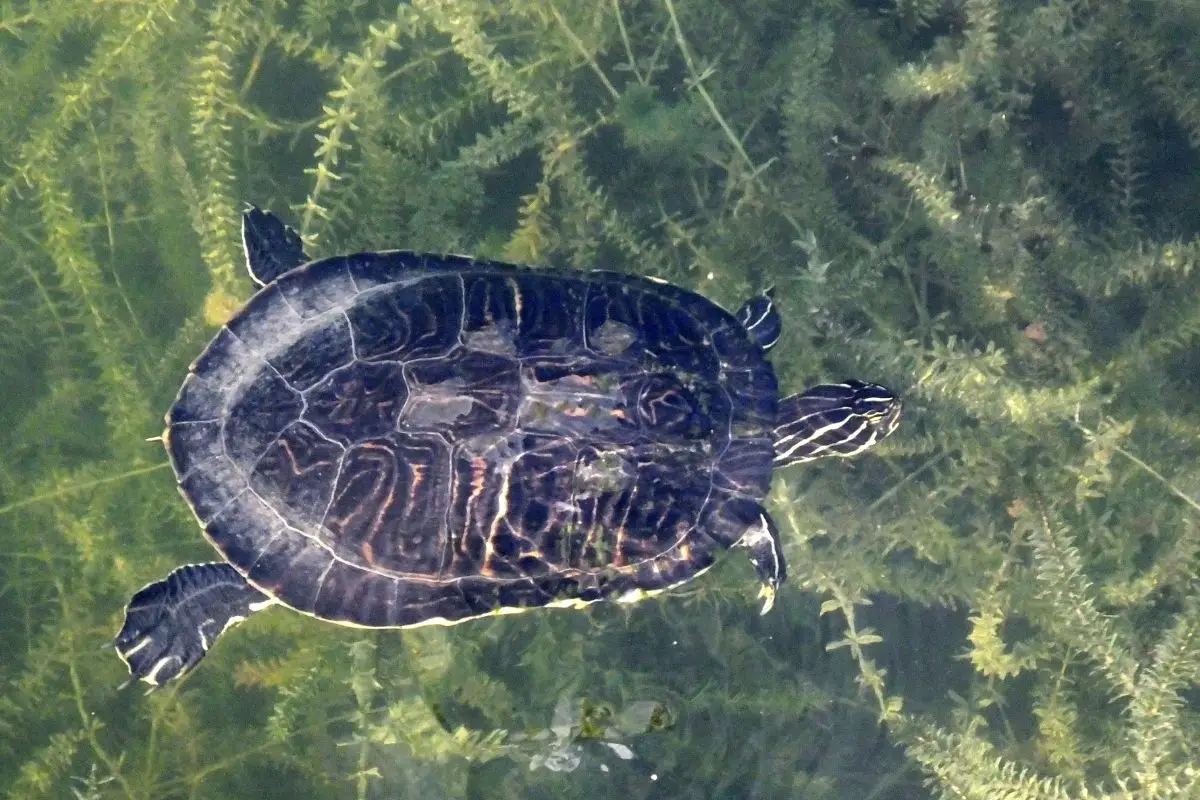
Conservation Status: LC
About The Turtle
Cooters are typically green, black, or brown colored. The shell has a series of swirling lines in both yellow and red coloring. The belly of these turtles is often yellow with more red and orange lines.
The skin will be a darker color of black or brown with white stripes. This is a very stripy turtle!
Maximum Size
Males will grow up to 12 inches while females can reach maximum lengths of up to 15 inches.
Favorite Snacks
This is another omnivore, eating fruits, nuts, seeds, leaves, roots, and even small animals. The Rio Grande River Cooter prefers plant matter over meat, but they will eat the latter if they need to.
Usually Found
Rio Grande River Coots live in freshwater habitats, usually near large bodies of water. They prefer to live in areas with a lot of vegetation. Look for places with lots of grass and trees.
They also enjoy living in moving water but will settle for ponds and lakes if that’s all there is. They’re not particularly fussy.
Lifespan
The average lifespan of a Rio Grande River Cooter is between 20 and 40 years.
Mating Season
Nesting is between May and July. The average incubation period is between 80 and 100 days.
Pallid Spiny Softshell Apalone Spinifera Pallida
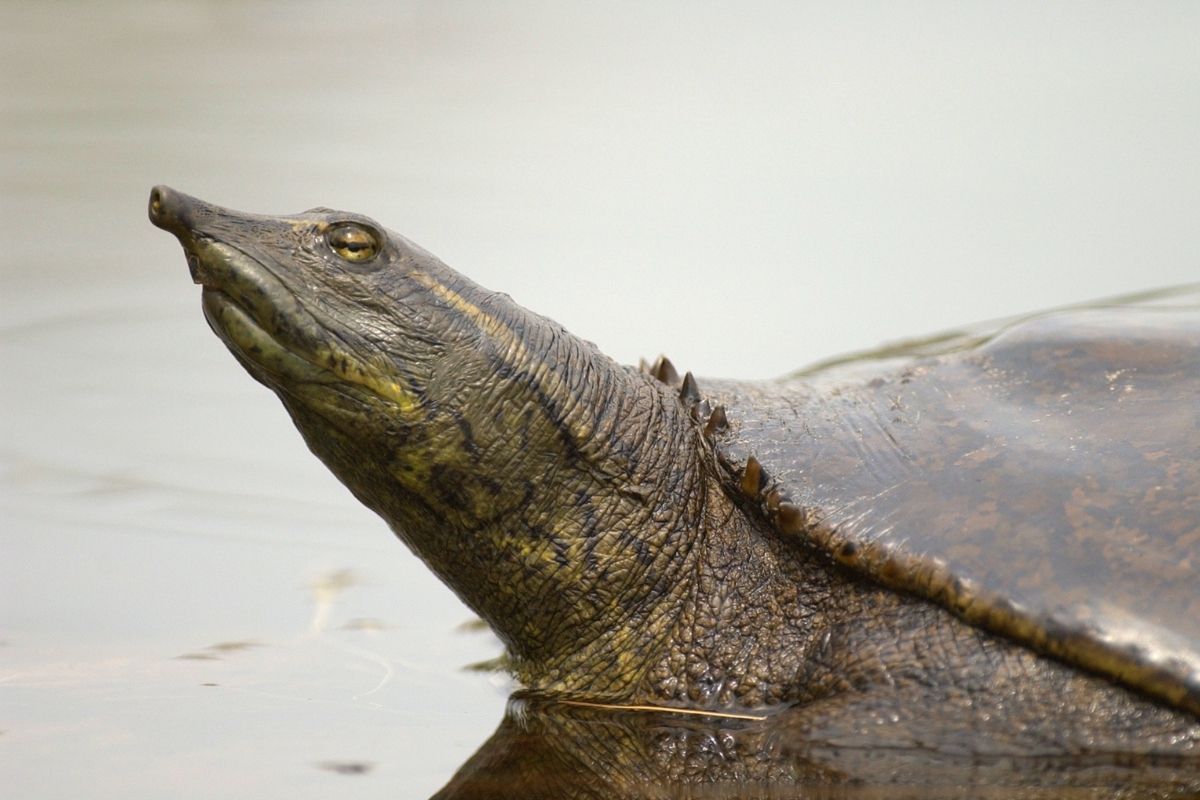
Conservation Status: LC
About The Turtle
Pallid Spiny Softshells are smaller than their cousins, the Spiny Softshells.
Their shells are pale colored, such as gray, olive, or light brown. There are spiky shapes near the edges of the shell but not anywhere else on it.
One easy way that you can distinguish this turtle from the rest is its long snout that looks somewhat like a snorkel.
Maximum Size
Males will be between 5 and 10 inches while females can grow much larger at 9 to 20 inches long.
Favorite Snacks
Pallid Spiny Softshells are carnivores. This means that they eat a wide range of food, including worms, insects, snails, and even small mammals.
Usually Found
This turtle lives in shallow waters, usually in ponds, lakes, and streams. It prefers to live near shorelines.
Lifespan
The average lifespan of a Pallid Spiny Softshell Turtle is between 40 and 60 years.
Mating Season
Nesting will begin in early spring and end during late summer. Incubation lasts on average around 80 days.
Eastern Box Turtle Terrapene Carolina Triunguis
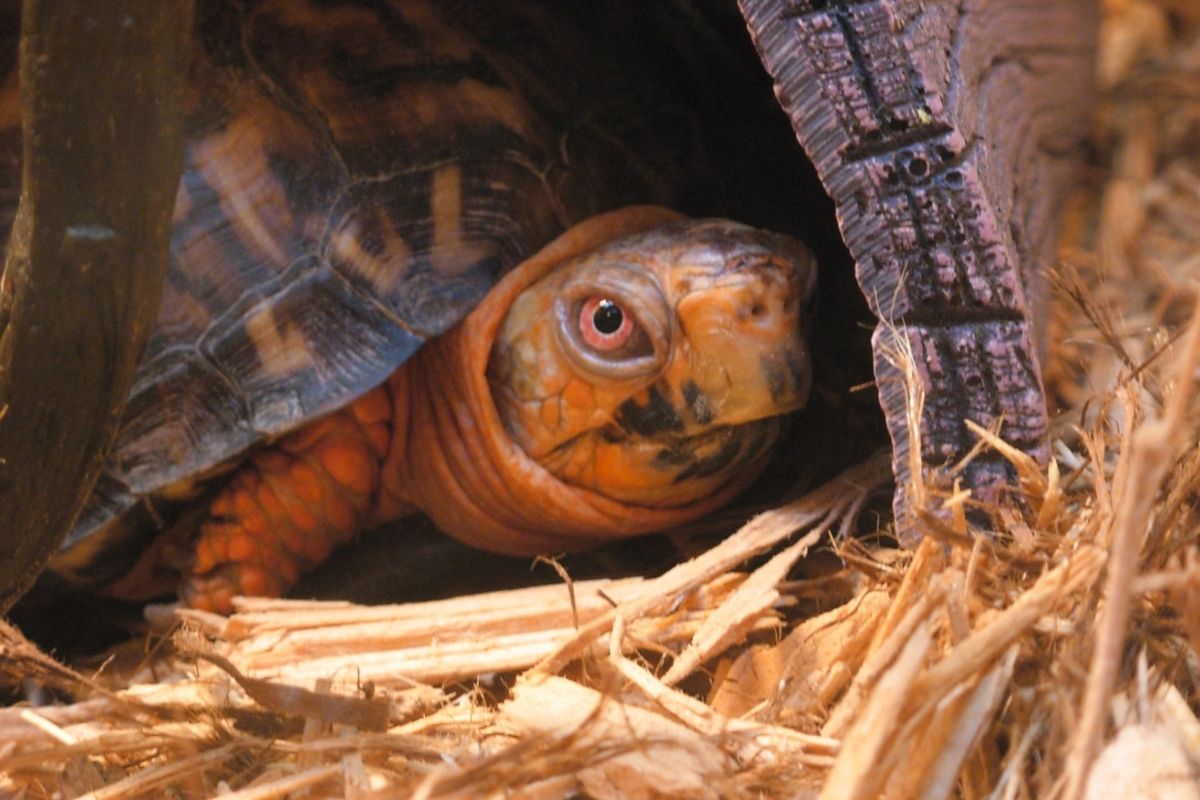
Conservation Status: VU
About The Turtle
The Eastern Box Turtle will have a domed shell with either black or brown coloring.
The pattern of the shell and the skin is the same, with yellow and orange abstract-shaped spots along all of it. This is one of the more interesting-looking turtles in Texas!
Maximum Size
This turtle can grow to be between 5 and 7 inches long.
Favorite Snacks
Eastern Box Turtles are omnivores. They eat plants, roots, and other plant materials as well as meat sources.
Usually Found
These turtles live in woodlands, forests, and marshes. They prefer to live on land rather than in water, unlike most turtles. You can also see them on grasslands and in meadows.
Lifespan
These turtles can live between 50 and 100 years.
Mating Season
These turtles nest between May and July, and the incubation period is between 70 and 80 days.
Razorback Musk Turtle Sternotherus Carinatus
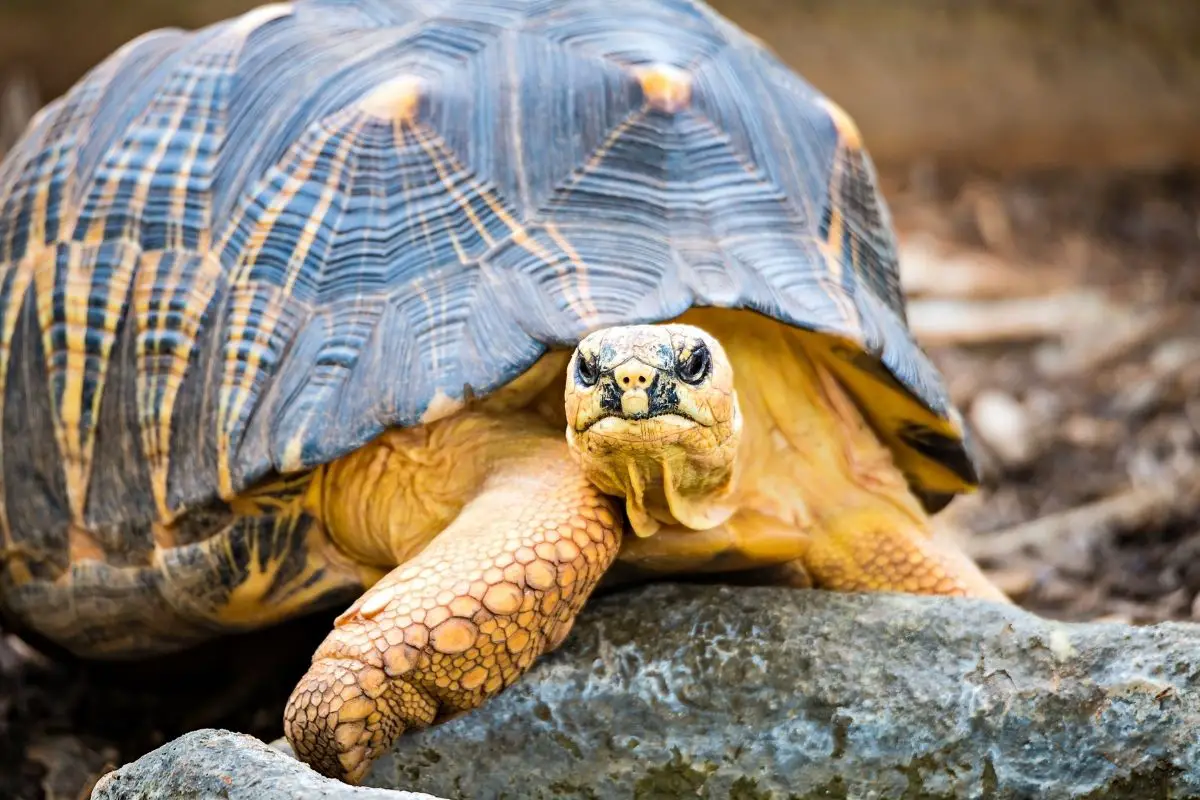
Conservation Status: LC
About The Turtle
This is a very fun turtle to look at. The scutes are very pronounced, giving this turtle’s feet a fun distinctive look. This also happens to be where the Razorback Musk Turtle gets its name from.
The shell’s color will either be a lighter color such as gray, or a darker olive or brown. While the shell can be other colors, these three are the most common.
Maximum Size
A Razorback Musk Turtle is a small species with a maximum size of only 6 inches long.
Favorite Snacks
Razorback Musks are carnivorous animals. They feed mostly on mollusks, fish, snails, and other meat sources.
Usually Found
These turtles live in rivers, lakes, and streams, but they can also live in wetlands. They prefer to live near coastlines. They’ll prefer their water to be stagnant or slow-moving.
Lifespan
Their lifespan is between 40 and 50 years, on average.
Mating Season
Nesting will begin in early spring and continue into late summer. The incubation period of the eggs is between 90 and 110 days.
Western Chicken Turtle Deirochelys Reticularia Miaria
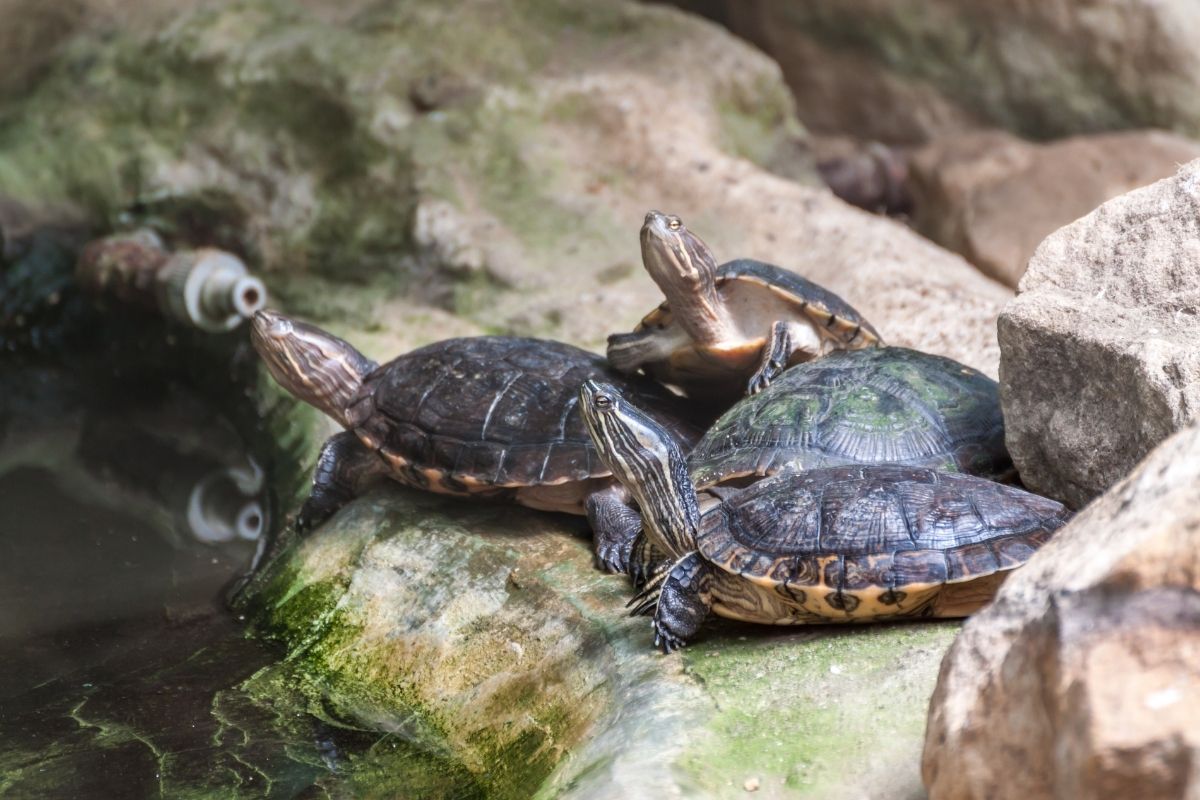
Conservation Status: LC
About The Turtle
The Western Chicken Turtle has an unusual name, but they look very ordinary in terms of turtles.
Their shell is oval-shaped and dark brown or olive green, with a light pattern. The lower shell will be a lighter color of either yellow or tan.
Their skin is usually a dark color but covered in yellow or green stripes to lighten up its appearance a little.
Maximum Size
The Western Chicken Turtle can grow to be between 5 and 10 inches, with females being slightly larger than males.
Favorite Snacks
They’re omnivorous, eating both plants and animal matter. They tend to favor fruits and vegetables over meat.
Usually Found
You can find these turtles in freshwater habitats like ponds, streams, lakes, and swamps.
They prefer shallow water that is sluggish rather than clear. They can often be found in sandhills. They do not like moving water much.
Lifespan
The average lifespan of a Western Chicken Turtle is between 15 and 30 years.
Mating Season
Nesting begins in the springtime and ends during summer. Incubation for the eggs will take around 75 to 90 days.
Midland Smooth Softshell Apalone Mutica Mutica
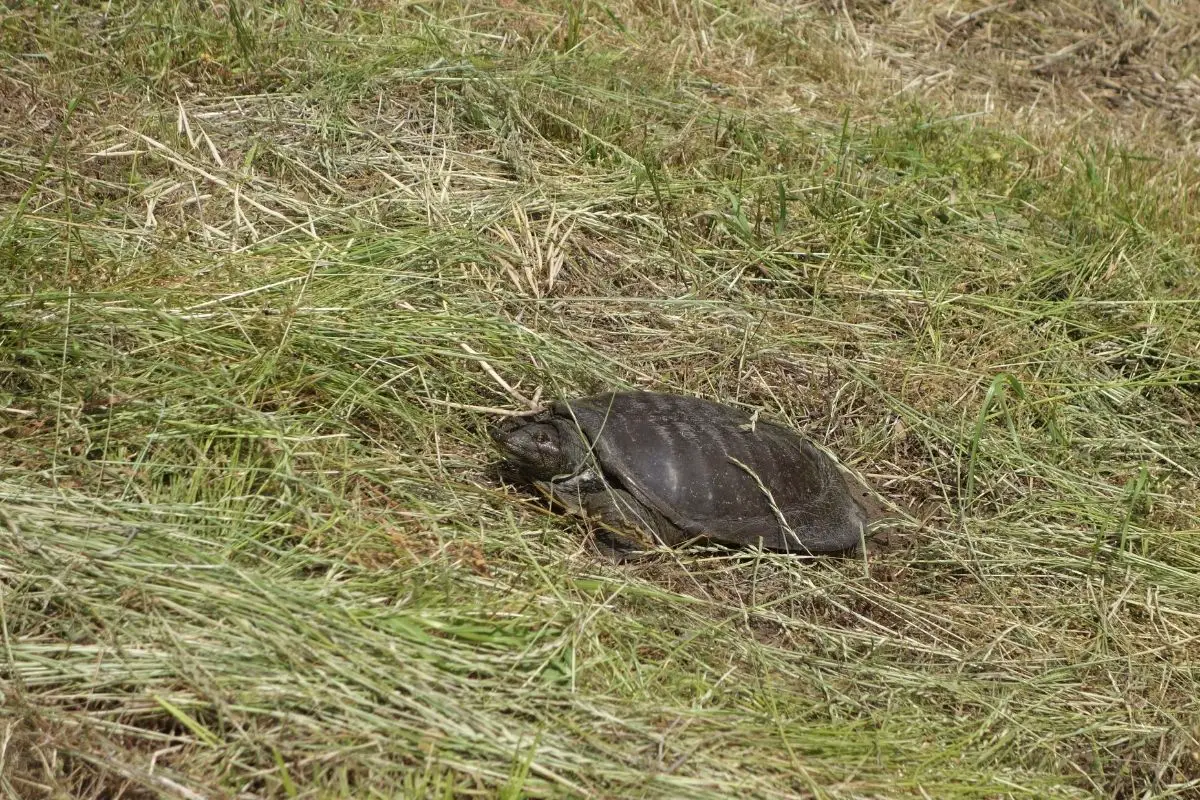
Conservation Status: LC
About The Turtle
Dissimilar to the other Soft Shell on the list, the Midland Smooth Softshell is a very plain-looking turtle with no distinct features.
There are no colors or textures on the shell that stand out, so it can be easy to confuse this with another plain-looking turtle.
The color will often be between olive green and gray, although it can also be dark brown. Its limbs will be lighter than the shell, with either light gray or olive coloring.
You can tell the Midland Smooth Softshell most by looking at its eye, as it will have a distinct white ring around the black center of it.
Maximum Size
The average size of a Midland Smooth Softshell is between 6 and 13 inches.
Favorite Snacks
This turtle is an omnivore meaning that it will eat anything it comes across, such as insects, fish, snails, and vegetation.
With that being said, the Midland Smooth Softshell definitely has a preference for meat over plants, so it will look for this before settling for the vegetative matter.
Usually Found
Midland Smooth Softshells live in freshwater habitats. These include ponds, streams, rivers, and lakes. They enjoy soft bottoms such as sand or mud.
Lifespan
Between 40 and 60 years is the average lifespan for a Midland Smooth Softshell.
Mating Season
Nesting will begin in May and it will end in July. Incubation will typically last between 70 and 100 days.
Alligator Snapping Turtle Macroclemys Temminckii
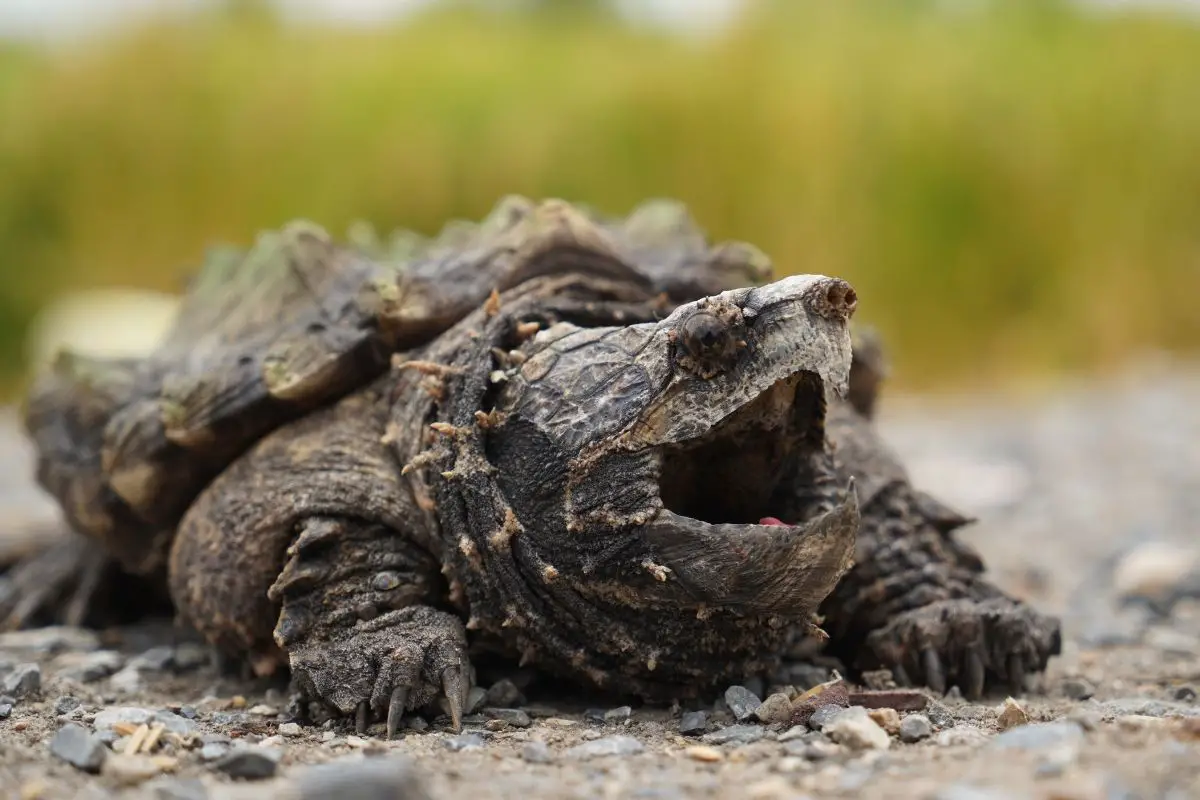
Conservation Status: VU
About The Turtle
This turtle gets its name from how similar its appearance is to an alligator.
The Alligator Snapping Turtle has a dark exterior with rows of spikes trailing down its shell. Even its skin appears spiky, with lots of lighter brown spikes poking up from it.
The turtle also has a pointy beak, fitting into its spiky persona. This is a common trait among all snapping turtles.
Maximum Size
The Alligator Snapping Turtle can grow to be between 15 and 26 inches long. The largest of the species recorded was 31.5 inches.
Favorite Snacks
This turtle is an omnivore and therefore eats both meat and vegetables.
They can hunt their prey slowly, by remaining at the bottom of a lake with their mouth open. Once a fish swims through its open jaws, it clamps them shut and kills the prey for eating.
Usually Found
You can often find Alligator Snapping Turtles at the bottom of bodies of water, such as lakes, sloughs, swamps, rivers, and bayous.
Lifespan
This turtle can live for 60 to 70 years.
Mating Season
Nesting will take place around May to July, and the incubation will last for anywhere from 70 to 100 days.
Western Spiny Softshell Apalone Spinifera Hartwegi
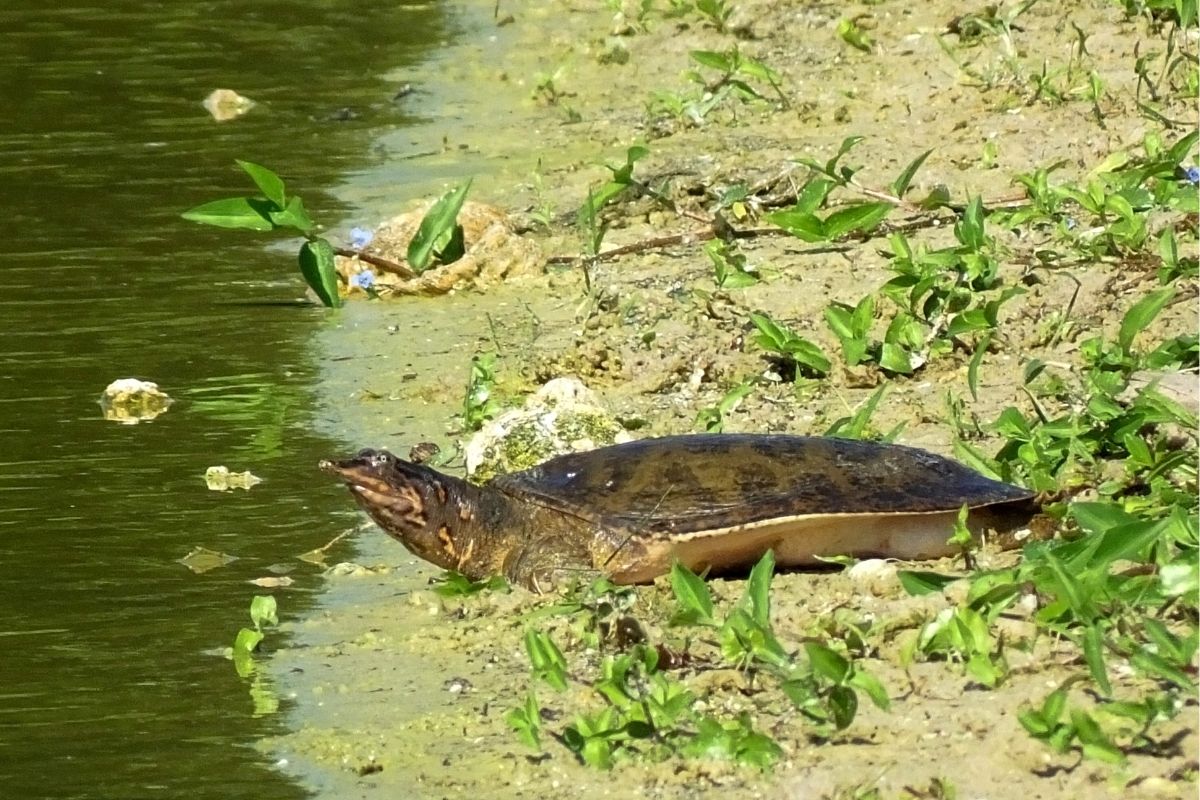
Conservation Status: LC
About The Turtle
This turtle has a leathery shell that is rounded and quite flat. It will either be light brown or dark brown, with the skin being a lighter shade of brown than the shell.
You can often spot the Western Spiny Softshell easily thanks to its snort-like snout that looks like two large holes in the middle of its face.
Maximum Size
Males will have a maximum length of 10 inches while females can grow to between 9 and 20 inches.
Favorite Snacks
The Western Spiny Softshell loves to eat insects and worms.
It will search for these in the soil and then use its tongue to catch them. These turtles are carnivores so will stay away from plant matter for the most part.
Usually Found
Western Spiny Softshells live in fresh waters, including ponds, streams, rivers, and lakes. They prefer shallow areas where they can hide out of sight.
Lifespan
These turtles can live between 40 and 60 years.
Mating Season
They will begin nesting in the early spring and will stop in summer. Eggs will hatch in 80 days from nesting.
Red-eared Slider Trachemys Scripta Elegans
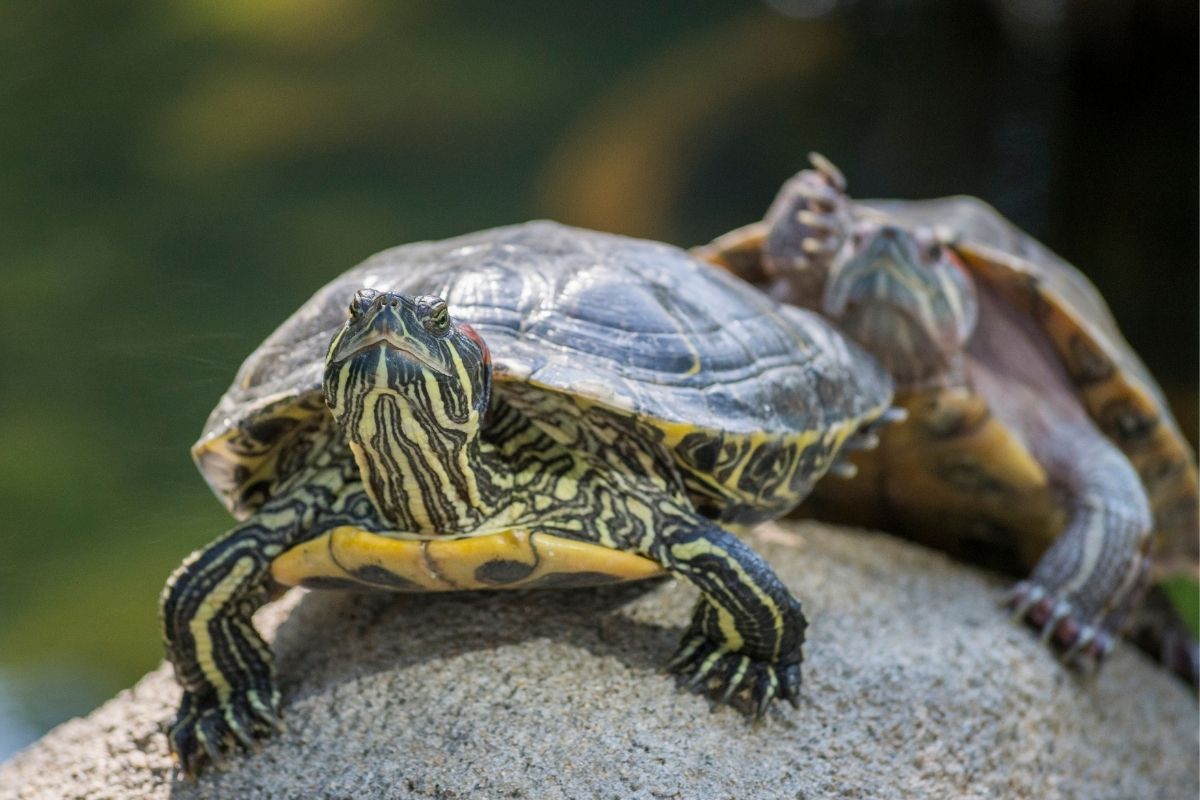
Conservation Status: LC
About The Turtle
Red-eared Sliders are one of the smallest turtles in North America. It’s named after its red ear markings.
You can also see red lines behind their eyes, which is another reason why they are called the Red-eared Slider. These lines might also be orange or yellow, but red is the most common color.
Their skin and shell will either be black or brown and littered with thin yellow stripes. The skin will have more of these stripes.
Maximum Size
These turtles grow to between 7 and 12 inches. Females can grow to be slightly larger than males.
Favorite Snacks
They like to eat insects and worms. Red-eared Sliders are omnivores, however, so they will also eat plant matter.
Usually Found
Red-eared Slider Turtles can be found near marshes, bays, and other wetlands. They like slow-moving water, so stay away from streams and fast-flowing rivers.
Lifespan
The average lifespan for a Red-eared Slider is between 30 and 40 years.
Mating Season
These turtles begin nesting as early as March and won’t stop until June. The incubation period is around 75 days long.
Common Musk Turtle (Stinkpot) Sternotherus Odoratus
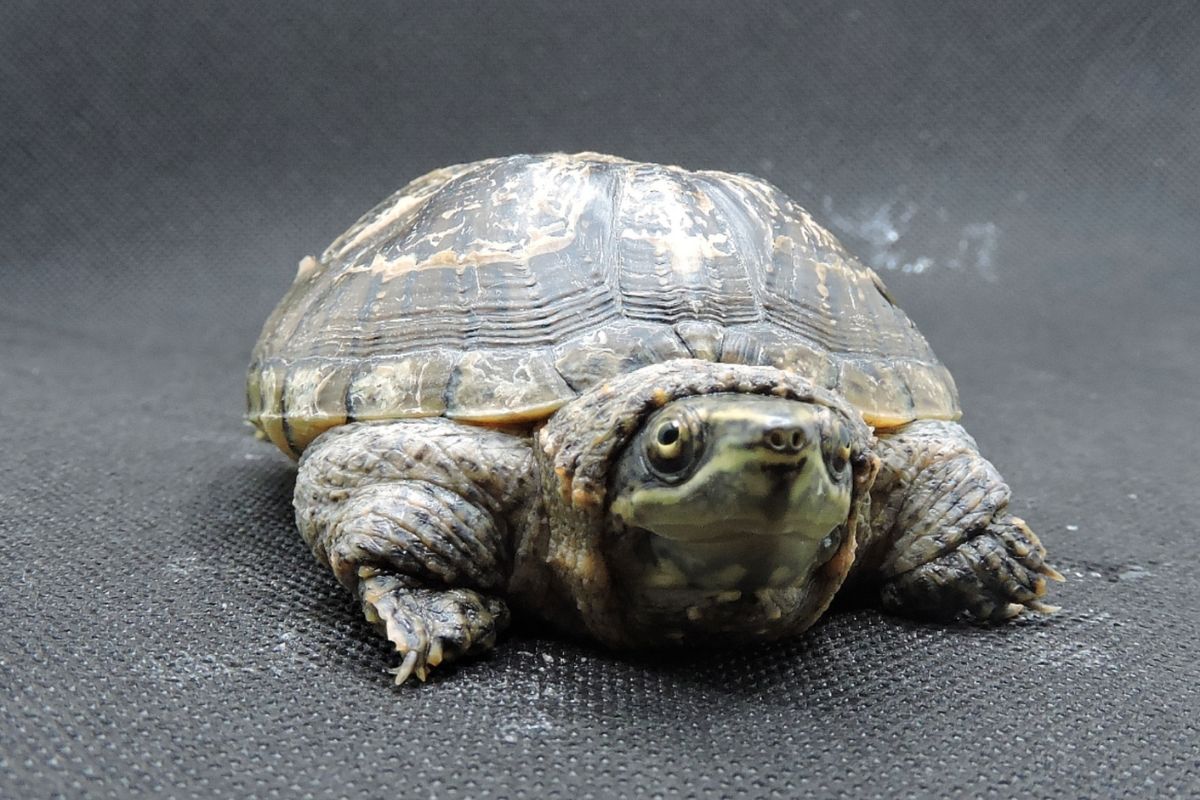
Conservation Status: LC
About The Turtle
As far as interesting turtles go, the Common Musk Turtle’s appearance doesn’t rank very highly. It will often have a plain appearance with consistent coloring.
The shell and the skin will be the same color, and they will either be black or brown.
There is one distinct feature of the Common Musk Turtle, however, which is a transverse ridge along the vertebrae of the shell.
Another feature that you can use to find the Common Musk Turtle is two white stripes on the top of its head.
Maximum Size
The average size of a Common Musk Turtle is between 3 and 4.5 inches.
Favorite Snacks
Common Musk Turtles eat mostly aquatic invertebrates like shrimp, crabs, crayfish, and worms. They’re omnivores, meaning they eat both plants and animals.
Usually Found
These guys live in rivers, streams, ponds, lakes, and even swamps. They like to stay near shorelines and prefer shallow waters. This makes it easy for them to find food and remain hidden from predators.
Lifespan
The Common Musk Turtle will live between 30 and 50 years.
Mating Season
Nesting will usually take place between late May and Mid-August, and the incubation period is 75 days.
Yellow Mud Turtle Kinosternon Flavescens Flavescens
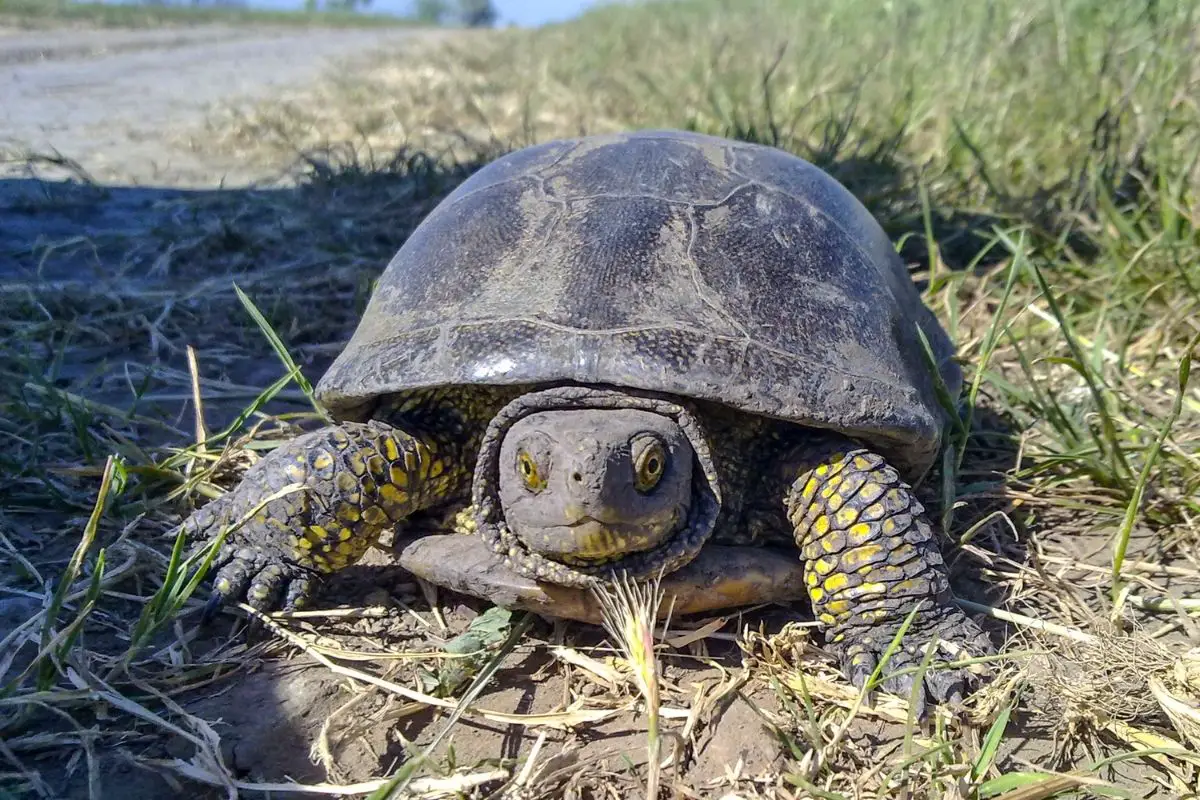
Conservation Status: LC
About The Turtle
Yellow Mud Tails have a rounded shell that is either brown, black, or olive.
The lower shell will more likely be yellow, which is where this turtle gets its name from. Their skin will be the same as the upper shell, whatever color that is.
Maximum Size
The maximum size for this turtle is 7 inches long.
Favorite Snacks
This turtle eats mainly aquatic invertebrates like snails, clams, mussels, and worms.
They also eat some fish, amphibians, and crustaceans. This turtle is an omnivore, so they will eat plant matter as well as meat sources.
Usually Found
Yellow Mud Tails can be found in freshwater habitats such as rivers, streams, ponds, and lakes.
They don’t need much space to survive, but they do prefer areas with plenty of vegetation nearby. They also like soft-bottomed water such as sand and mud.
Lifespan
Their average lifespan is between 30 and 50 years.
Mating Season
Nesting begins in May and doesn’t end until July. Incubation can take around 100 to 110 days.
Texas Diamondback Terrapin Malaclemys Terrapin Littoralis
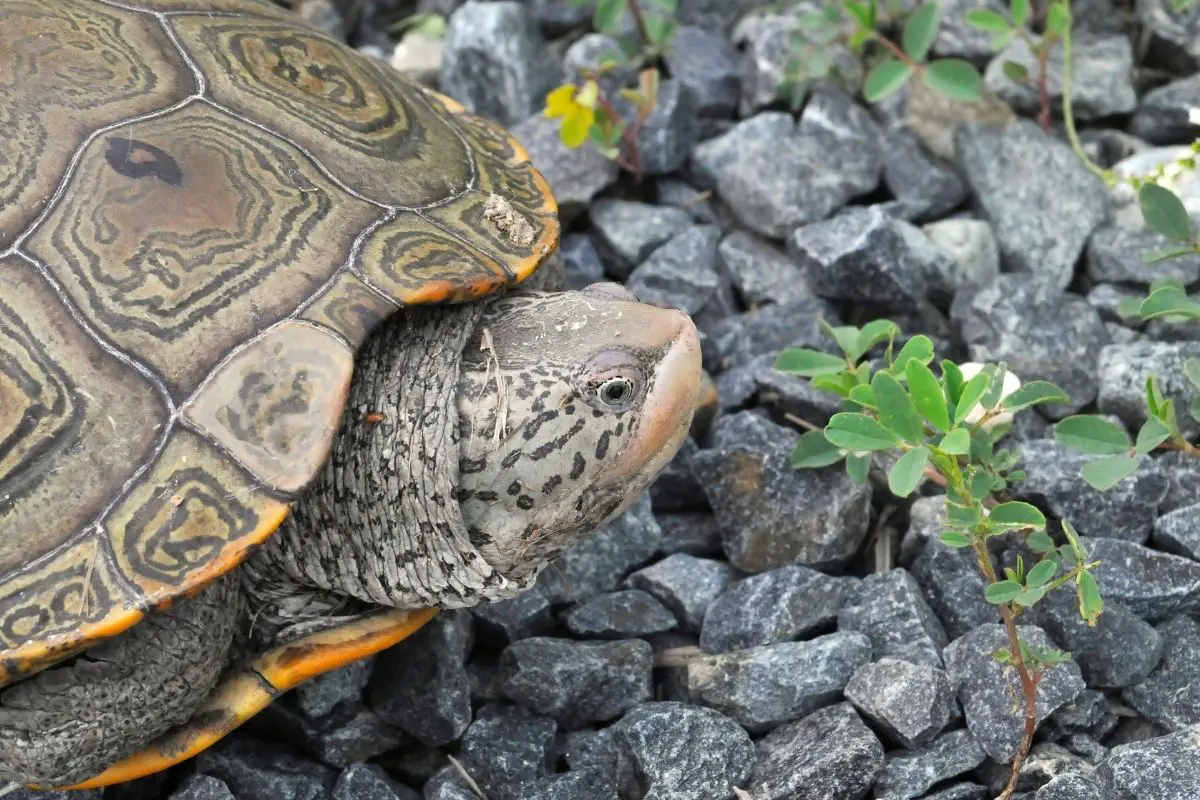
Conservation Status: VU
About The Turtle
This turtle is an excellent swimmer. Its small body allows it to move through the water quickly and easily. It has a dome-shaped back and a flat tail.
The upper shell is dark brown or olive green with yellow and tan spots all over it.
The lower shell is the same color as the spots – either yellow or tan. This turtle’s skin will be light gray with lots of little black spots over it.
Maximum Size
These are small turtles only reaching 6 inches in length for males and 8 inches for females.
Favorite Snacks
Turtles like to eat fish, crustaceans, and mollusks. They’ll also eat some vegetation if they absolutely need to, but as they are carnivores they will mostly stick to meat sources.
Usually Found
Texas Diamondback Terrapins can be found at the edges of ponds, lakes, and rivers. They prefer brackish waters as well as coastal salt marshes.
Lifespan
These turtles have a shorter lifespan than most between 25 and 35 years.
Mating Season
They nest during the spring and summer months. They’ll usually start around April and will continue all the way through July. The incubation period is around 80 to 90 days.
Alien Turtles In Texas
There are many different species of turtles living in Texas. The 30 listed above are native to Texas, but this doesn’t mean that these are the only species that you can find in the state.
Other turtles are in Texas, but might not be native to the state – these are called alien turtles.
Most of them are very similar looking to one another, so finding out what type of turtle you’re seeing is difficult.
If you see a turtle that looks unfamiliar, then you should contact your local wildlife agency to get information on how to identify it.
Alien turtles are often brought to Texas by humans. This might be to help the wildlife or ecological system, or it could have been by mistake.
There are plenty of alien species all over the world for all different animals.
Turtles can be very beneficial to the wildlife, as they can keep insects at bay and eat vegetation where they might be too much.
There are many more things that a turtle can do to benefit Texas, which is why alien species might have been introduced.
Another possibility is that someone has set a couple of turtles into the wild in Texas when they are not native to the state.
If these turtles were to reproduce during the nesting season, they could start off a population of alien species in Texas.
This is not typically advised as it can be detrimental to the ecosystem if turtles are set off into an unfamiliar wild.
Plus, the turtle might not be able to find everything necessary for them to survive, causing them to die.
What You Should Do If You Find A Native Turtle In The Wild
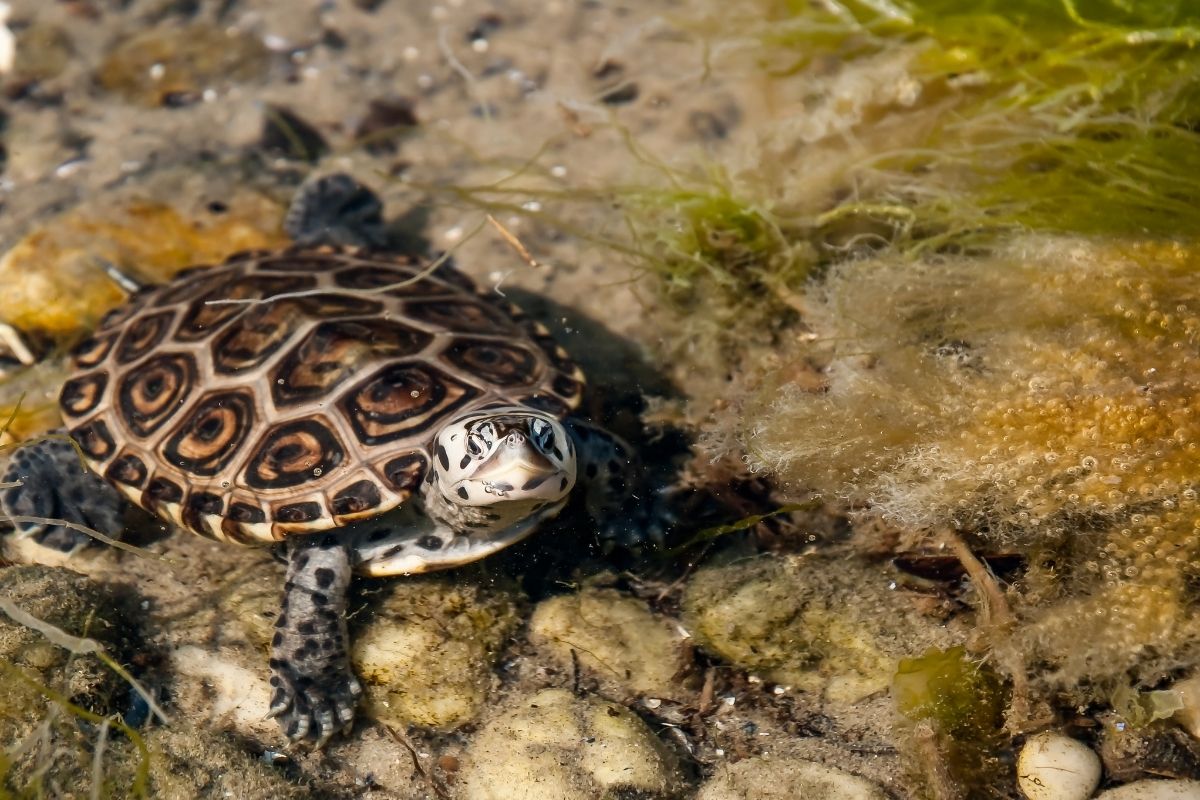
If you happen upon a native turtle while hiking or fishing, there isn’t really anything you can do to help them. You can try and catch them, but that may cause them harm. So, just leave them alone.
Can You Touch The Turtle?
If you want to take pictures, then you can do that without the flash on.
You can often touch them as they aren’t a particularly aggressive animals, although you should be cautious when approaching any wild animal.
Most animals in the wild will carry bacteria, especially those who spend the majority of their time in the water.
If you’re planning on touching a wild turtle, make sure that you are aware of the risks of getting those parasites on your hands.
Can You Feed The Turtle?
You can also buy some food to give to the turtle. It’s best to avoid feeding wild animals, but if you need to feed the turtle, then you shouldn’t go overboard with the amount of food. Just enough to sustain the turtle until it finds its own source of food.
Make sure that you are feeding the turtle the correct food so that it doesn’t eat anything toxic to its body.
Here is a list of foods that you can feed turtles, bearing in mind that this is not the only food that you can give them – just some examples:
- Sardines
- Trout
- Chicken
- Beef
- Turkey
- Shrimp
- Lettuce
- Carrots
- Kale
- Green Beans
It’s important to remember that you don’t need to worry about every single thing that happens to the turtle.
Some people think that they need to protect the environment from human intervention, but this isn’t true. Humans are part of the natural order of life, and we need to learn to live harmoniously with nature.
Can You Take The Turtle Home As A Pet?
There are several reasons why you shouldn’t bring home a wild turtle as a pet.
First of all, you’ll need to provide a large enclosure for the turtle. This means that you have to get rid of other pets, such as dogs and cats.
Also, you’ll have to clean out the tank frequently, as the turtle will probably defecate and urinate inside of it. Finally, you’ll need to ensure that the enclosure is safe for the turtle.
If you plan on keeping the turtle as a pet, you’ll need to keep him/her away from children and other animals.
Still, if you want to bring a wild turtle home with you, then you might be able to do this.
However, you need to check the laws in the current state that you’re in. We are going to be looking at Texas law surrounding turtles a little later in our article.
Is The Turtle Dead?
Not necessarily. If you find a turtle near wintertime, it is possible that the turtle is just hibernating.
Hibernation is a way of conserving energy during cold weather, which is why most reptiles do it.
If you find a hibernating turtle, allow it to remain in peace.
Waking it could mean that it will have trouble getting back to sleep and will become hungry. Turtles hibernate because there is very little food for them as it has all died.
So, if you wake a hibernating turtle and it cannot find any food, then it might die.
Laws Surrounding Turtles In Texas
You can own turtles in Texas, however, the species has to not be protected by law.
Common turtles are allowed to be owned, but endangered species are protected and therefore it is illegal to keep them as pets.
Here is a list of the turtle species that are illegal to keep in Texas:
- Alligator Snapping Turtle
- Cagle’s Map Turtle
- Mud Turtle
- Texas Tortoise
- Diamondback Terrapin
If you want to remove a wild turtle from the wild you will need a hunting license to do so. It is illegal to use bright lights to confuse the animal and it is illegal to use turtle traps in public bodies of water.
Summary
Turtles are amazing creatures that are found throughout the world. They are highly intelligent and are extremely social animals. They are also one of the oldest living organisms on Earth.
However, they are still threatened by humans. There are many different factors that contribute to their decline, including habitat loss, overfishing, pollution, climate change, and invasive species.
It is important to understand how these threats affect turtles and what you can do to help save them. By learning more about them, we can make sure that they survive into the future.
We hope that our article was beneficial to you and you learned more about all of the wonderful turtles in Texas!
